The past year was a bit strange for us as we traveled much less than we usually do. We made it to eight countries (not counting the U.S.) including only one we hadn't been to before: Cuba. (I actually got to Cuba twice with Cuba Unbound.) We did did check off a major item on any traveler's list by getting to the Galapagos islands with Galakiwi. Another big goal was to finally spend some time in Argentina, particularly Buenos Aires. It lived up to its reputation.
We cruised up the Rhine River on Viking River Cruises from Basel, Switzerland to Amsterdam. We took Eurail around northern Europe a bit, stopping in Berlin, Ghent, Belgium, and Paris. We took an eight-day bike trip with Exodus Travels through Brittany, France. (Here are some extra images from the bike trip.) That long of a bike ride was a first for us as well. My usual distance limit is pedaling over to my favorite Minneapolis bar.
The other highlight of the year was a driving trip to the American music meccas of Nashville, Memphis, and northern Mississippi. We heard lots of great music, and passed through Robert Johnson's crossroads.
I also had my first ever gallery photo exhibit, at Icebox Gallery in Minneapolis. That involved narrowing down seven years worth of photos to 35 images. You can see those images here.
This year, I made over 10,000 exposures. Narrowing those down to 50 takes a while, but it's a few hours of reliving a lot of good memories.

1Fidel Castro may be dead, but he's not gone. A big video screen played one of his speeches on “Police Day” in Havana, and even the rerun drew a crowd. The Police Day celebration extended all through Havana. At one display, you could see all the police standard weapons laid out on a table. You could look, but not touch.
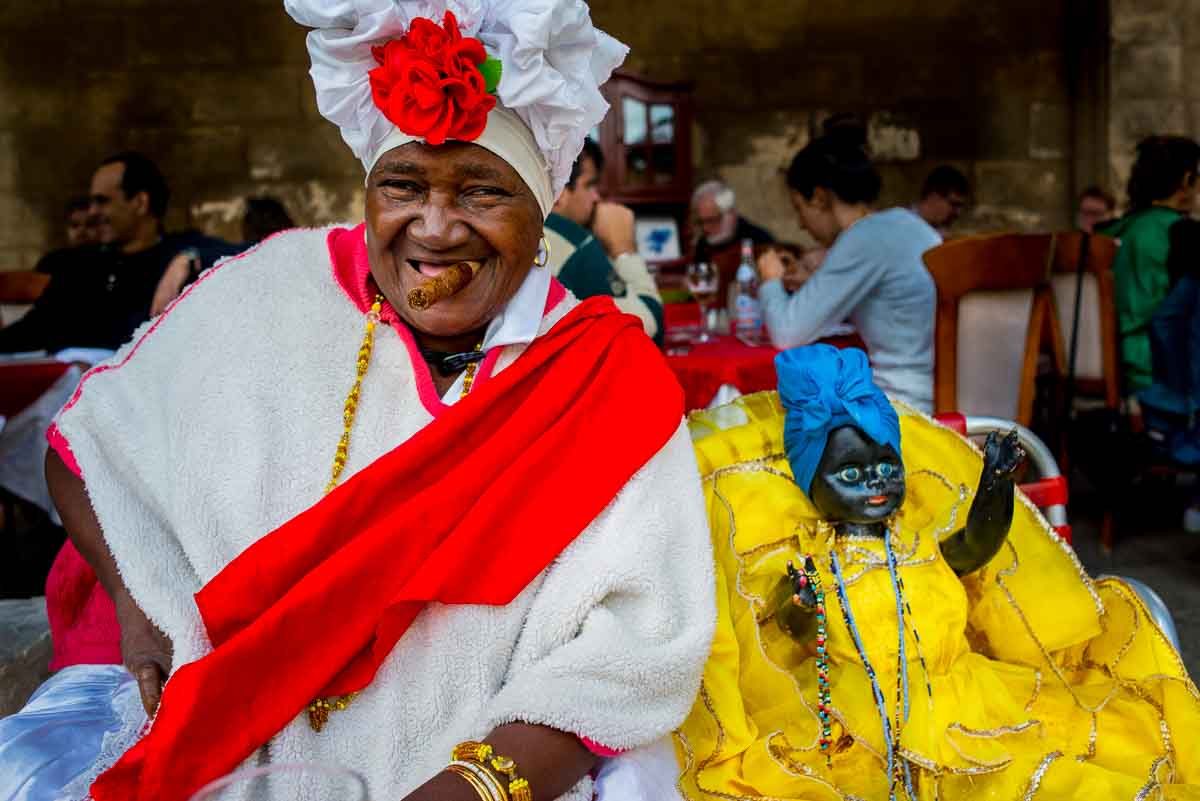
2 If you want to take a picture, that will be $1. What if I want my fortune told? That will be $5. I settled for the photo and a bit of conversation, which included a sales pitch for a cigar like hers.
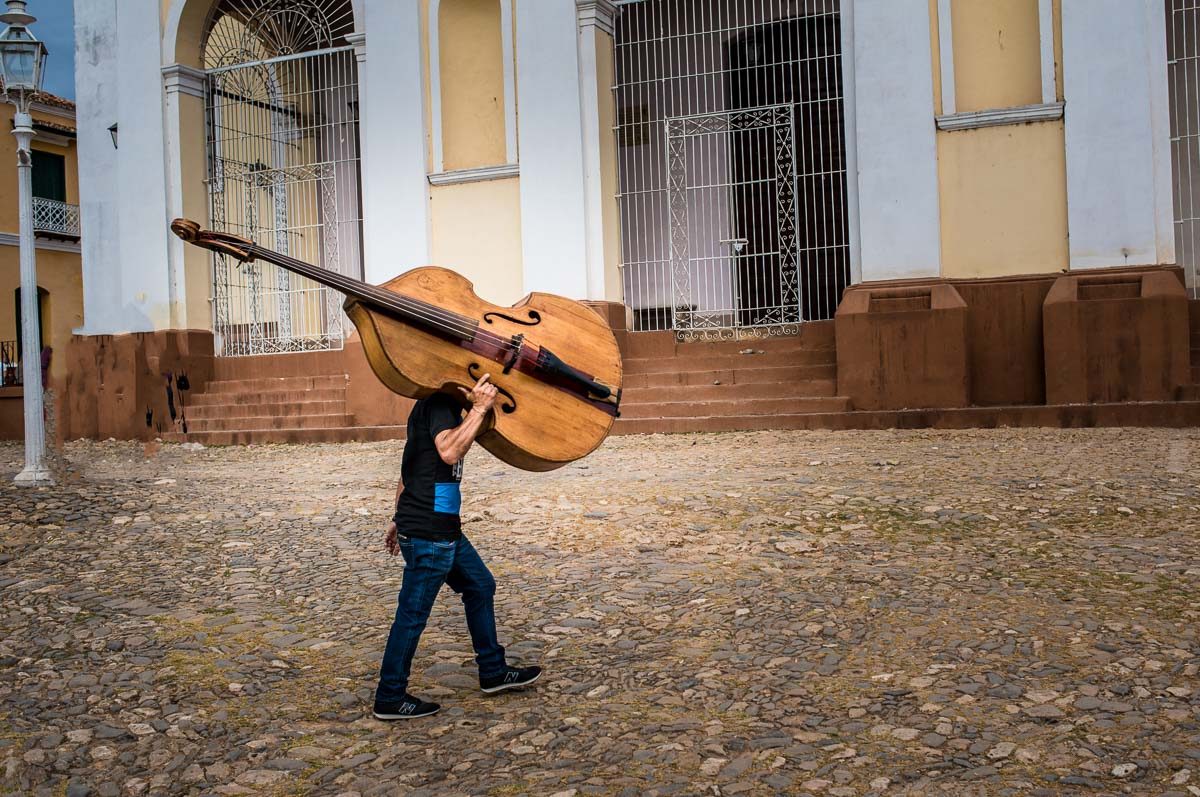
3You can't walk around any Cuban town without hearing live music coming from all directions. I'm not sure why it's like that, but it is. This guy was hauling his bass to join a band playing in the main plaza of Trinidad.
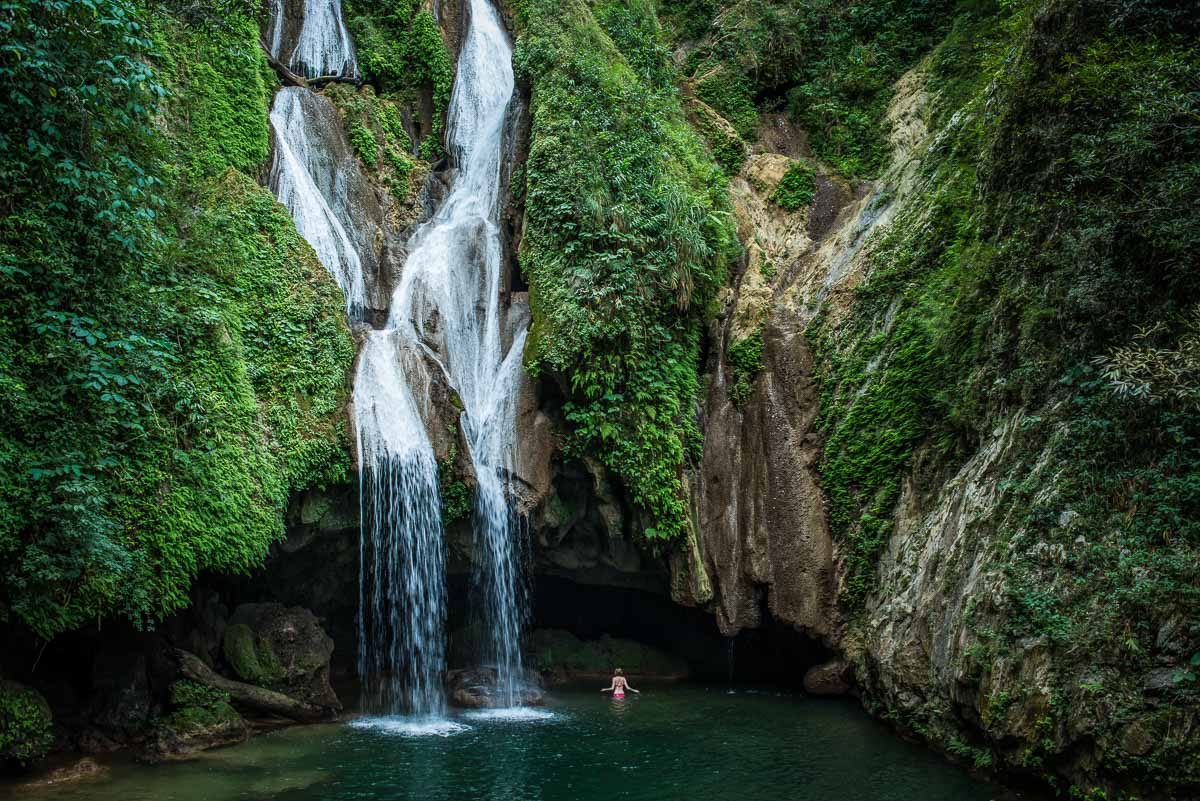
4Perhaps the most surprising thing about Cuba was the extent and beauty of the undeveloped countryside. The government has protected a lot of Cuba's natural beauty, like this. And we were glad to spend a couple hours hiking to reach this secluded idyll inspiring scene.
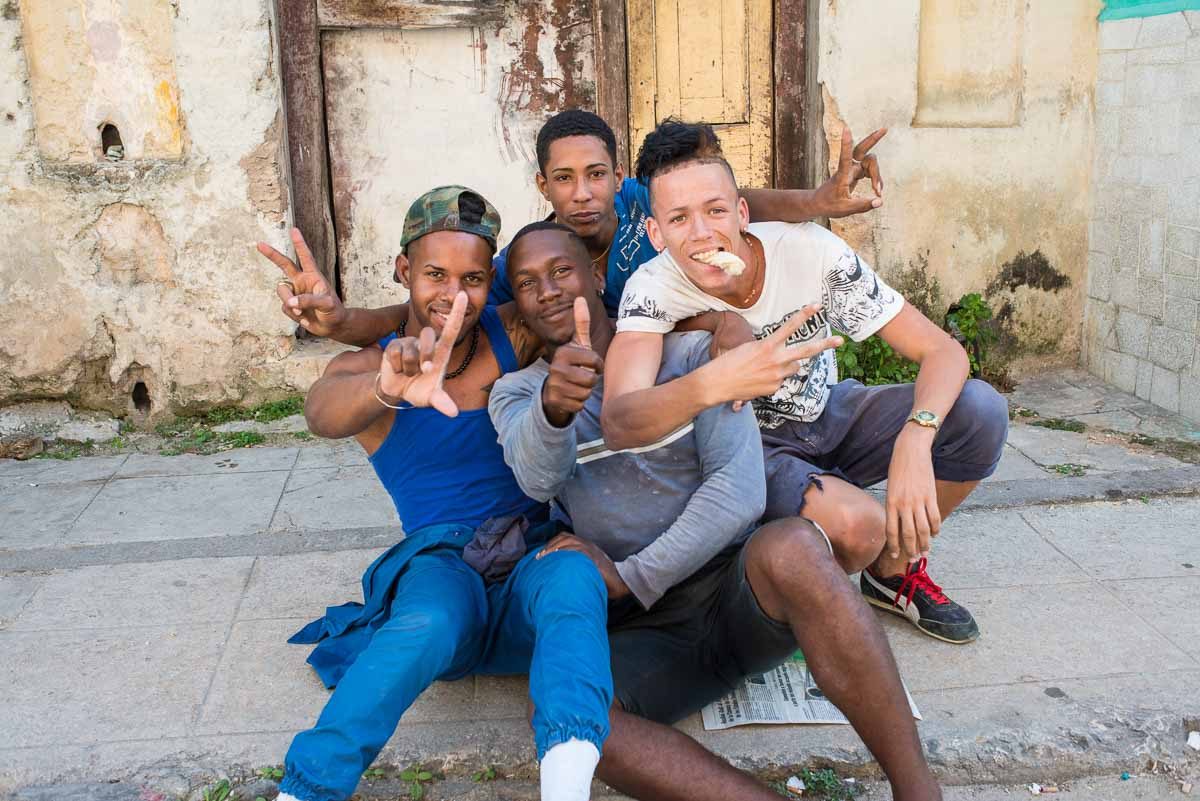
5 I took a long walk along Calle Neptuno from the Vedado area of Havana to the Old City. I think it is safe to say that I was the only tourist for miles. The nice thing, obviously, about speaking Spanish is that you can wander into real neighborhoods that aren't set up for tourists and talk to people. Like these guys who were just hanging out, listening to Cuban hip hop, and only too willing to pose for a picture.
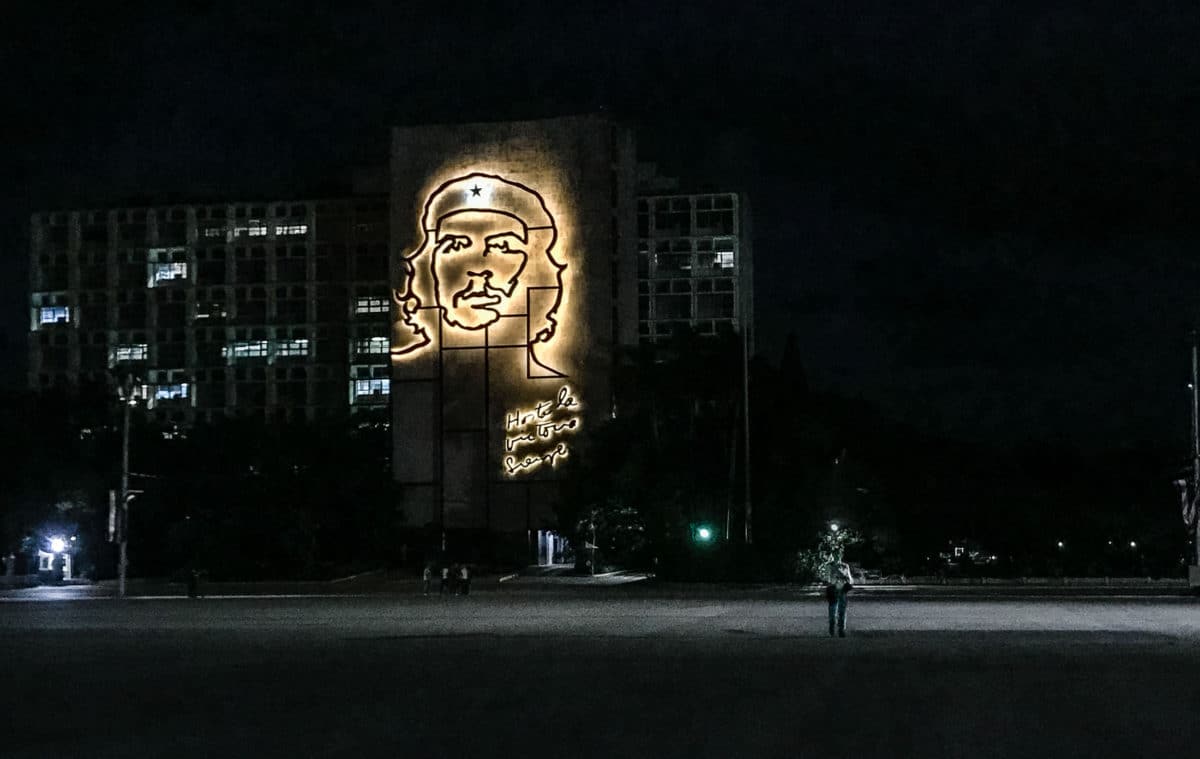
6Except for organized demonstrations, the Plaza of the Revolution in Havana is pretty much empty of everything but neon propaganda. As Che says, “Towards the victory, always.” It does look really good lit up at night, though.
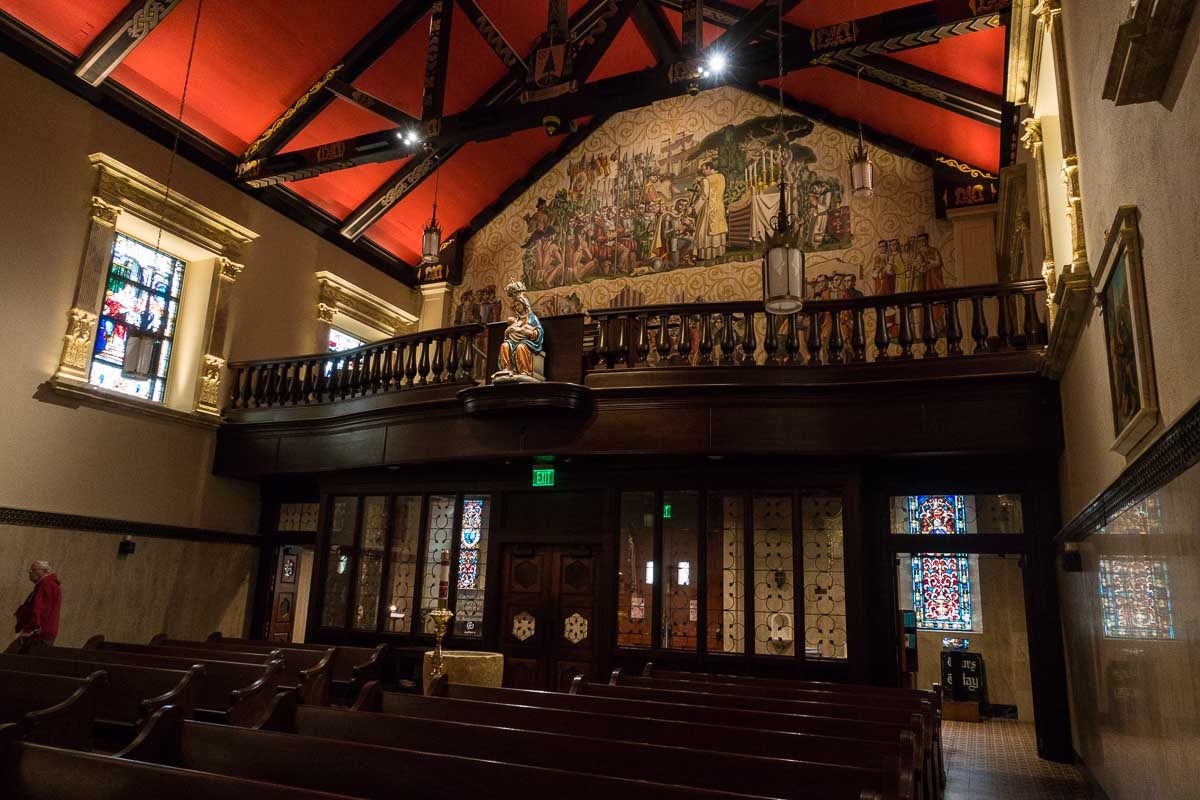
7 Whenever I think of the outrageous rhetoric emanating from certain quarters of Washington regarding the immigrants to this country, I can't help but remember a little bit of our history. The Spanish people arrived in North America long before the English, and they were the founders of the oldest city in the United States, Saint Augustine, Florida. Not much of the original city is left–but there are some fortifications you can visit if you like–and this old church. It doesn't date from the beginning, but the mural above the balcony commemorates it nonetheless.
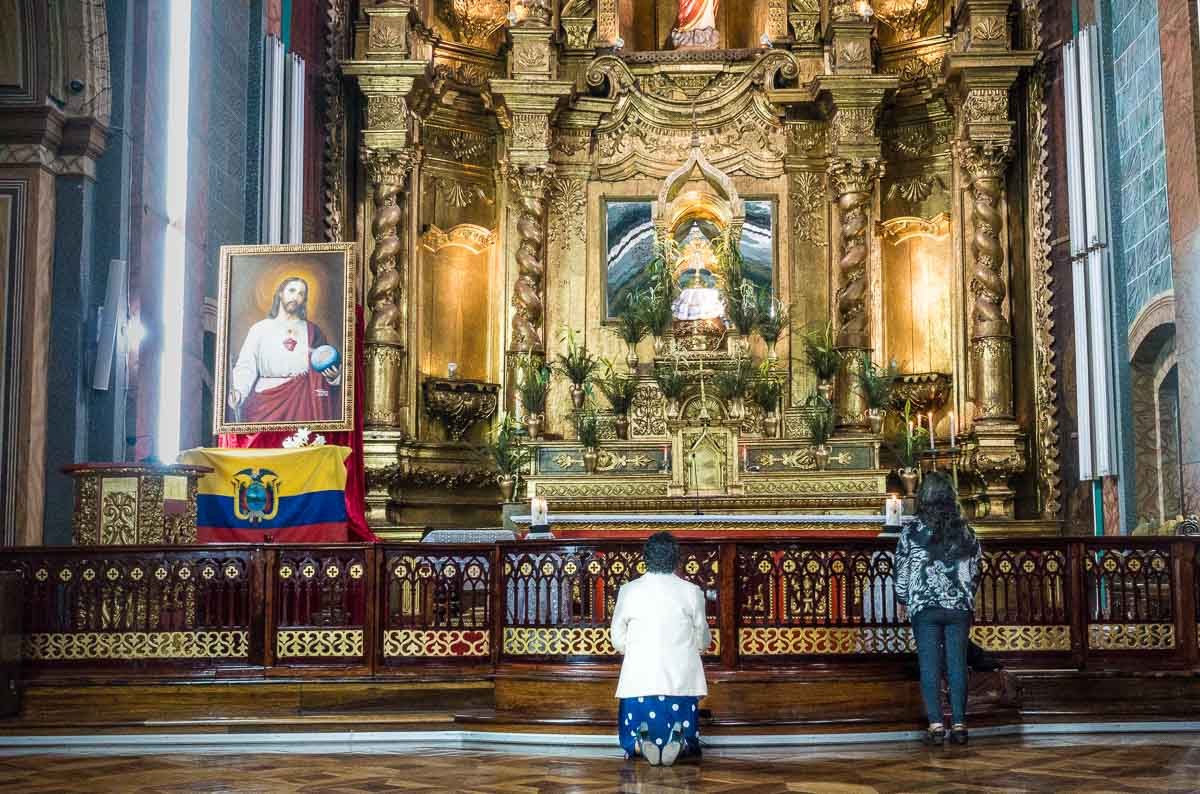
8 The Plaza Grande area of Quito, Ecuador is surrounded by spectacularly decorated colonial era churches. One sees here, more than anywhere else, what the Spanish did with a lot of the riches they looted from the South American Indians. If you want to see the rest of the South American gold, you have to go to Spain.
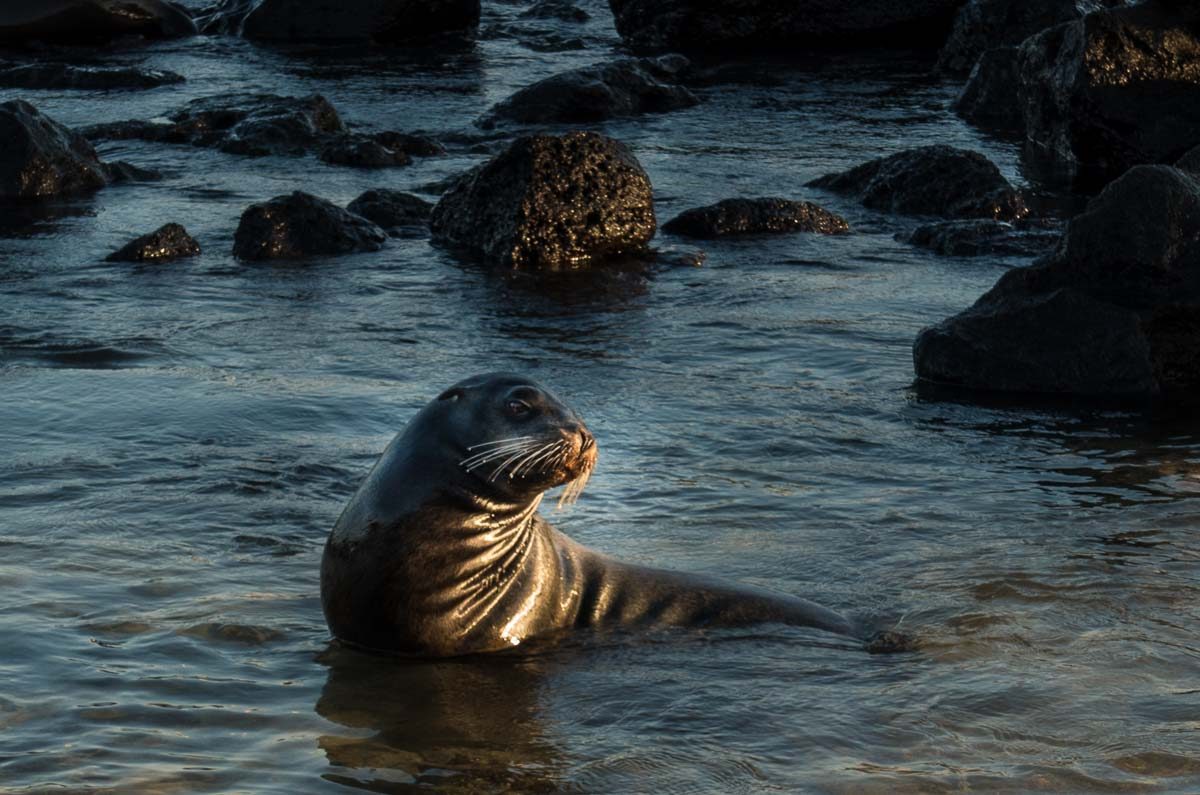
9 The Galapagos Islands are really all about the wildlife–especially because they are so unafraid of humans. For the most part, you can walk right up close to them, even the birds, and just snap away. They'll even pose if you ask nicely.
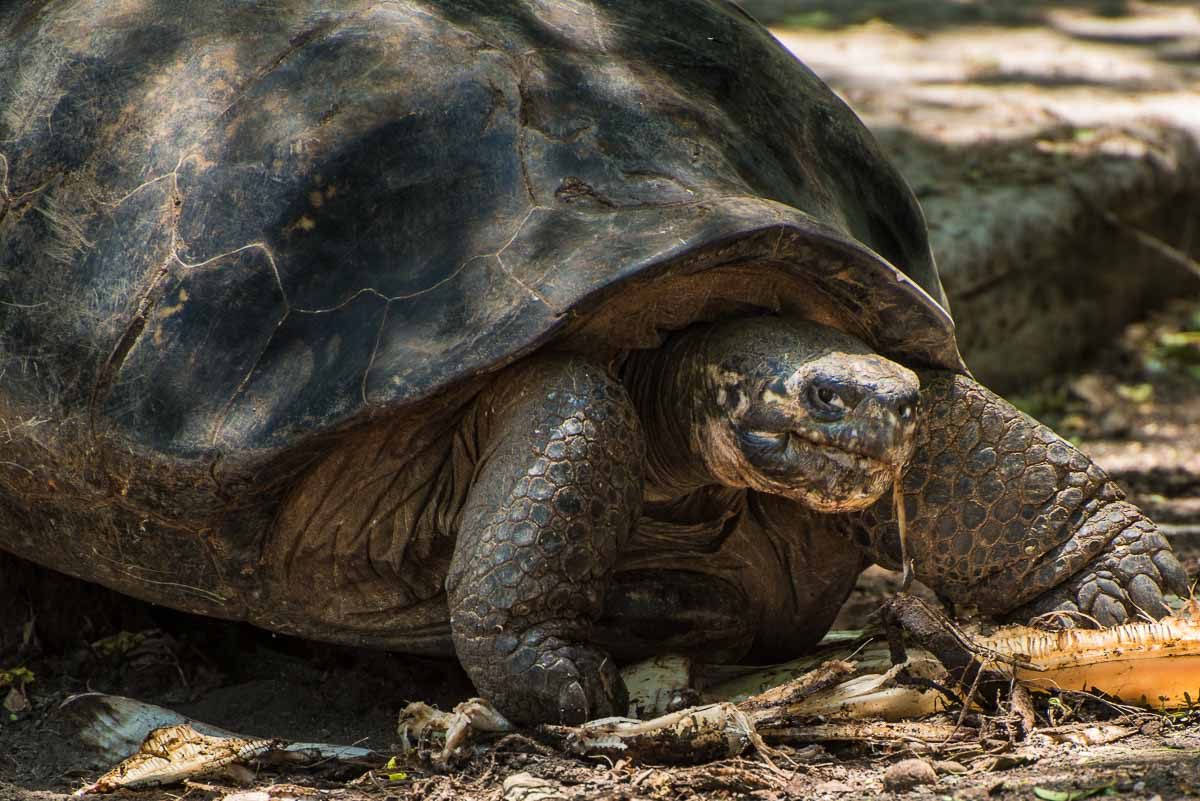
10 I could probably fill up this entire post with animal photos from the Galapagos. But I won't. I will however post four out of the thousand or so I shot. Sorry, boobies, multiple other bird species, dolphins, more iguanas, flamingos, and other animals who didn't make the cut. Thanks anyway. You know who you are.
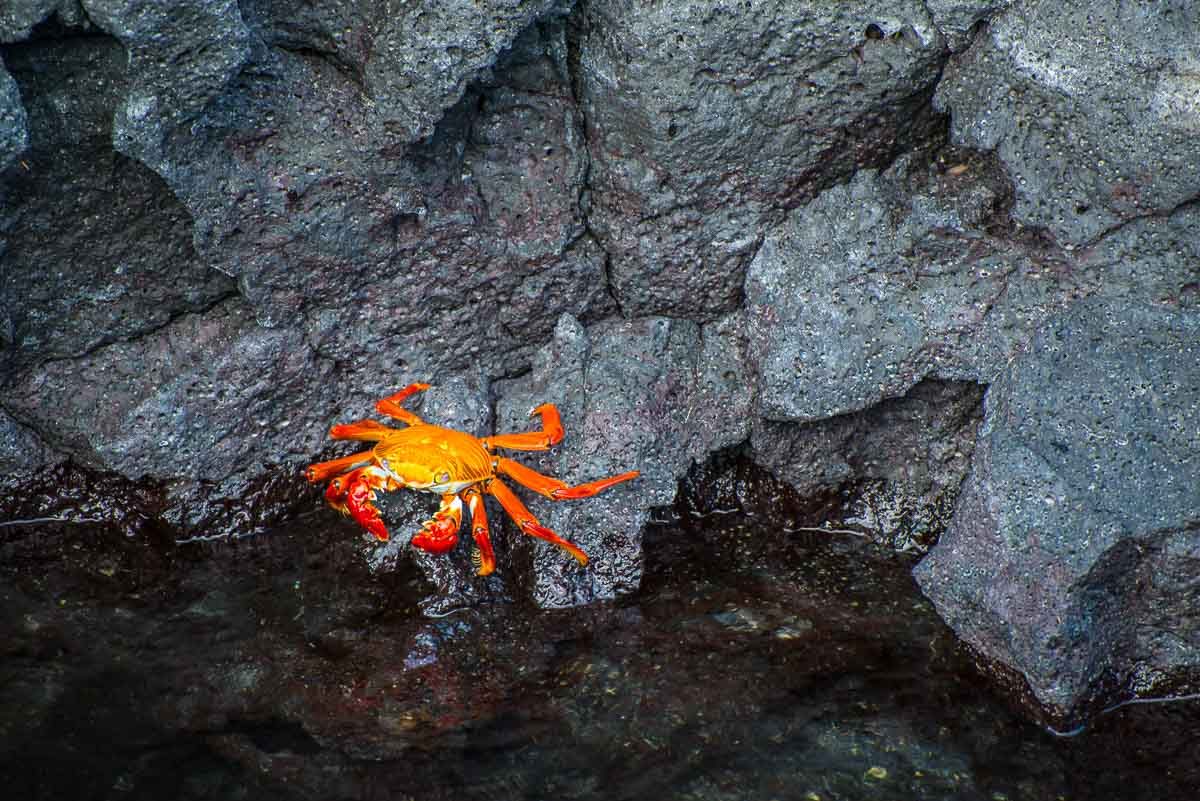
11 It's the color that makes this shot. I wonder how a crab so bright survives with all the hunting birds in the sky. They must be fast. I wish I had had a net. This guy could have been my dinner. Actually, on a couple of occasions, his cousins probably were.
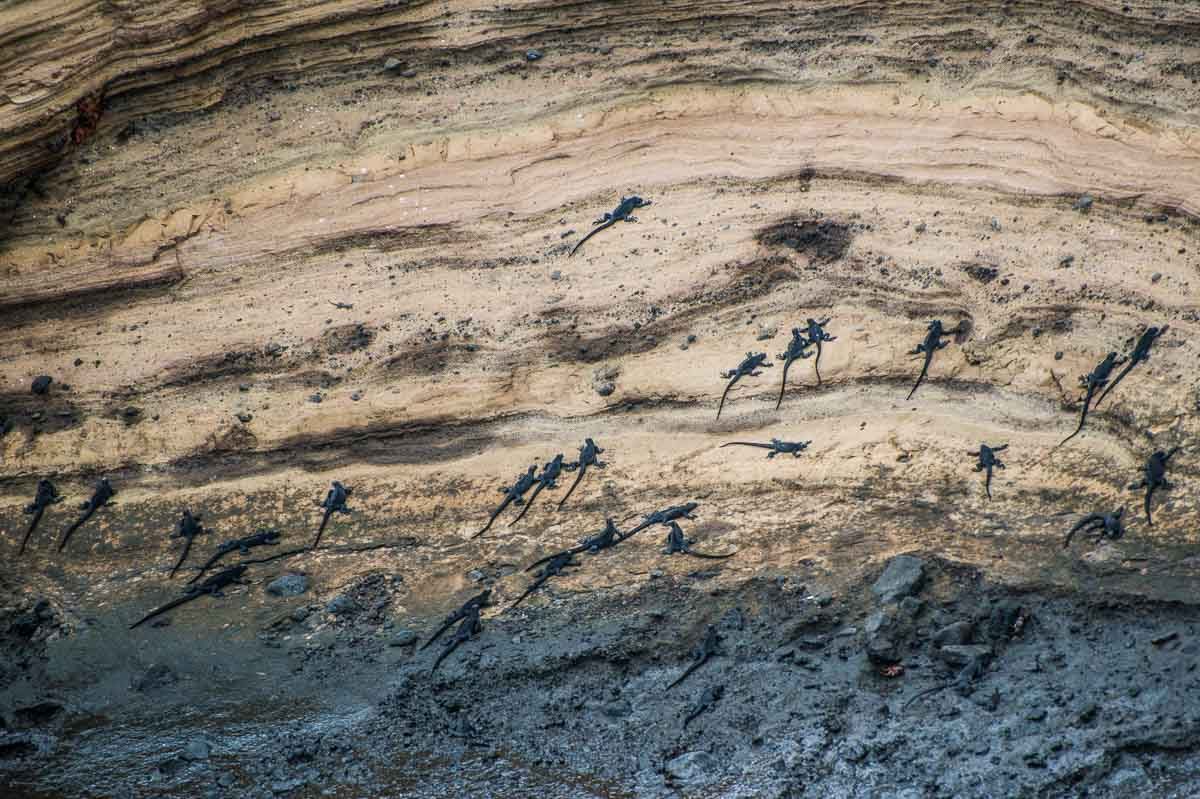
12 The abstract nature of the patterns of the thousands of iguanas on the uninhabited (by humans) islands you see as you sail around Galapagos waters is fascinating.
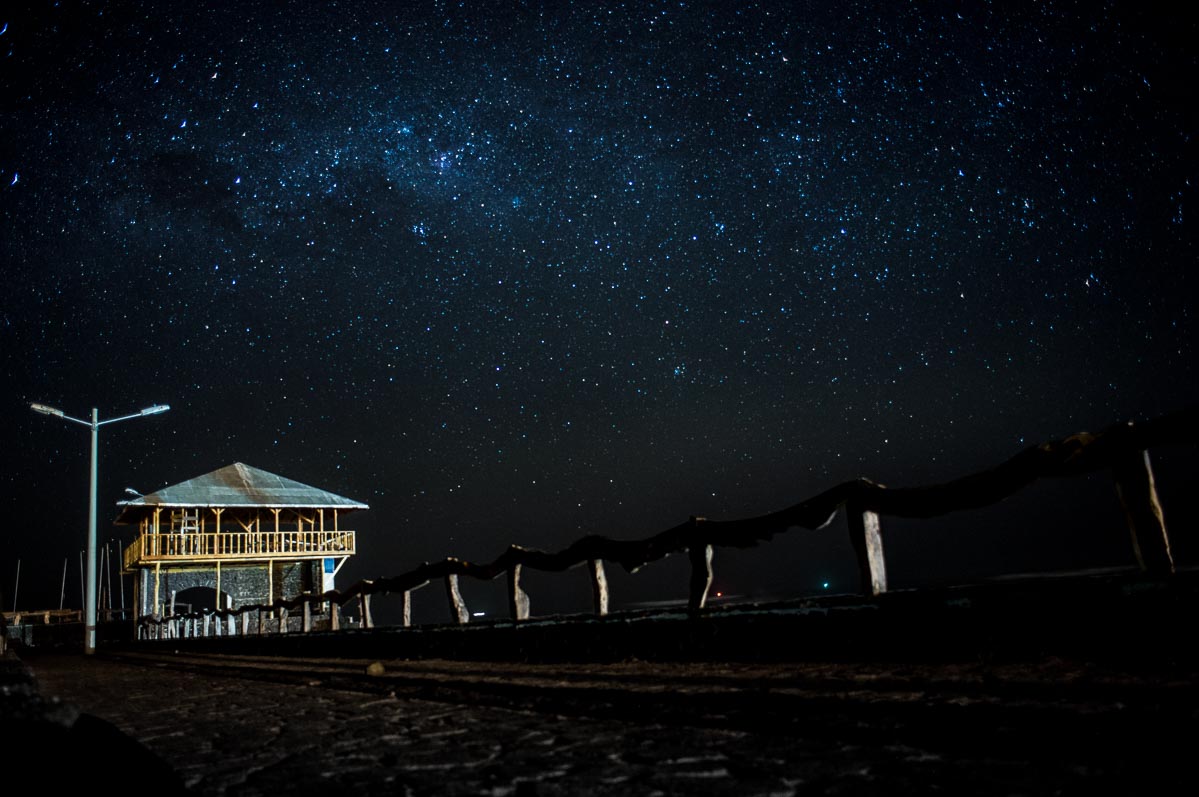
13 It's not all animals in the Galapagos. The distance from most light sources allows you to see the stars that you can never see in the bright city lights of less remote spaces. This photo was a tough one, because I didn't have a tripod. I had to make one from my t-shirt which padded the top of a post. It was difficult to frame, so I had to do a lot of fooling around and make a lot of exposures to get one good one.
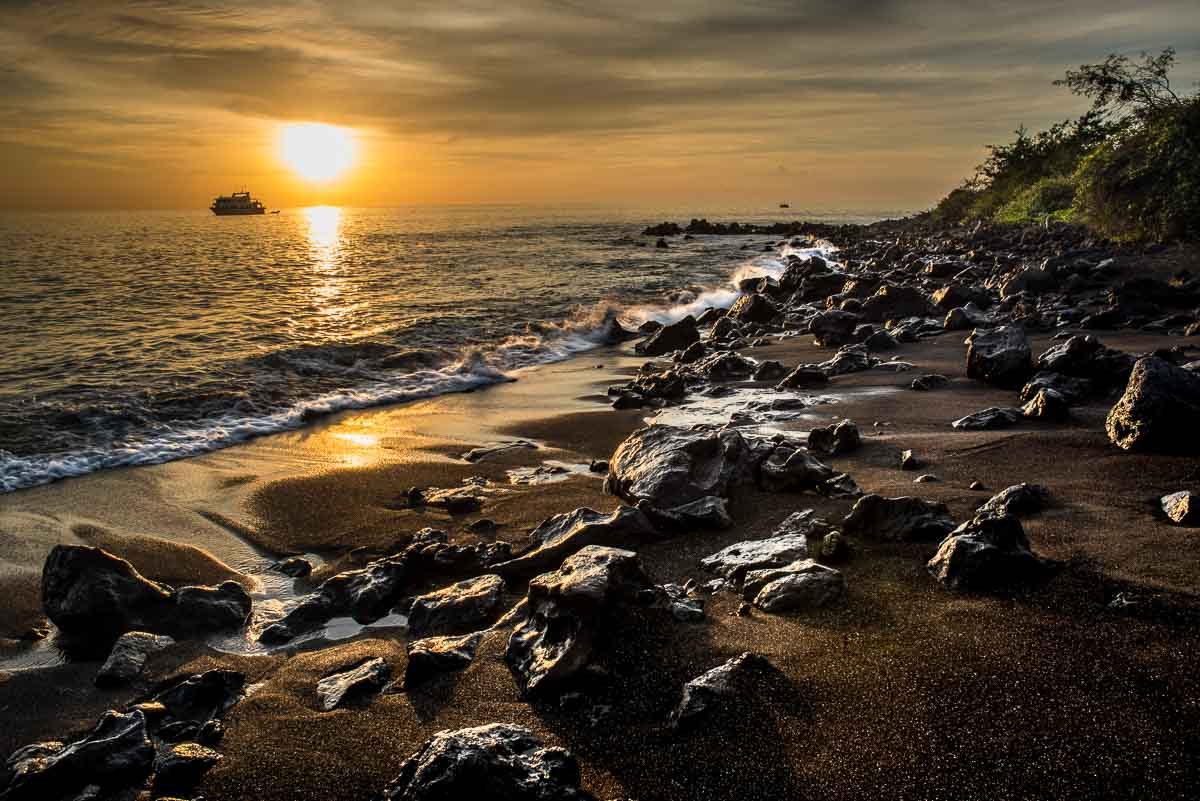
14 Isla Floreana is a treat among treats of the Galapagos. Only about 100 people live on the island, and so the beach is absolutely deserted at sunset. That's our boat out there. There weren't any others in sight. Love the wet rocks hit by the setting sun. Don't you?
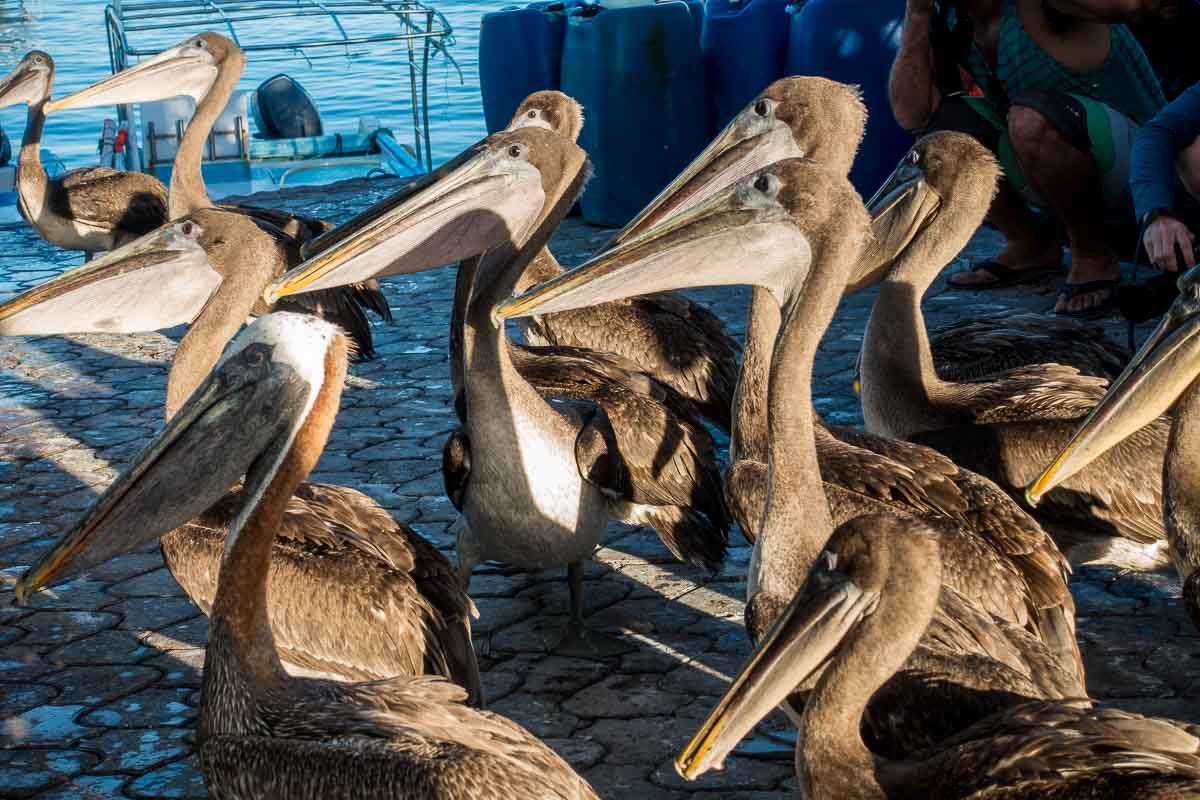
15 Ok, just one more animal photo from the Galapagos, and only because it is funny. Like I said, the Galapagos animals aren't afraid of humans. This bunch of scavengers was lined up at the local fishmonger's table, waiting for the scraps that he tossed aside as he cleaned his catch.
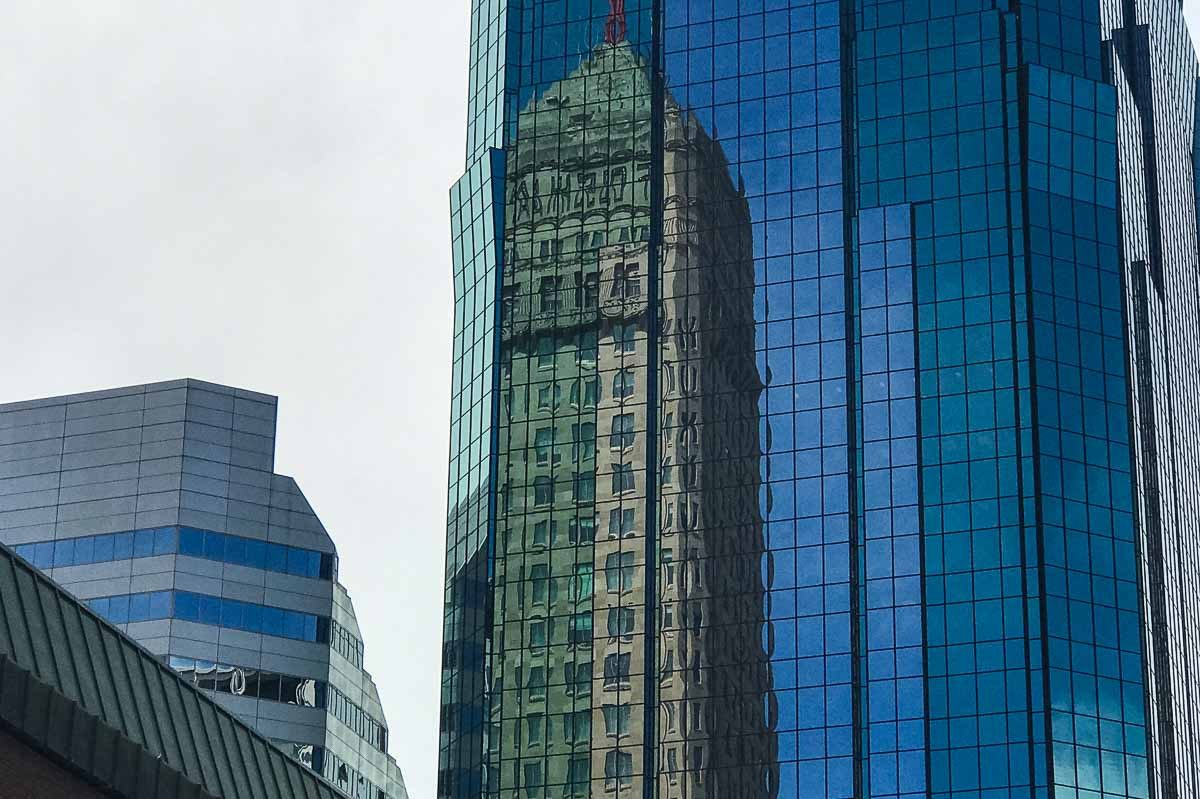
16 Minneapolis has a lot of distinctive and beautiful modern architecture in its downtown. But, I'm still a big fan of the 1929 Foshay Tower. Completed just as the Great Depression started, it was bankrupt before it was ever occupied. But it stood, and now it houses a swank W Hotel including the Prohibition Bar, where you can get the most imaginative cocktails in Minneapolis.
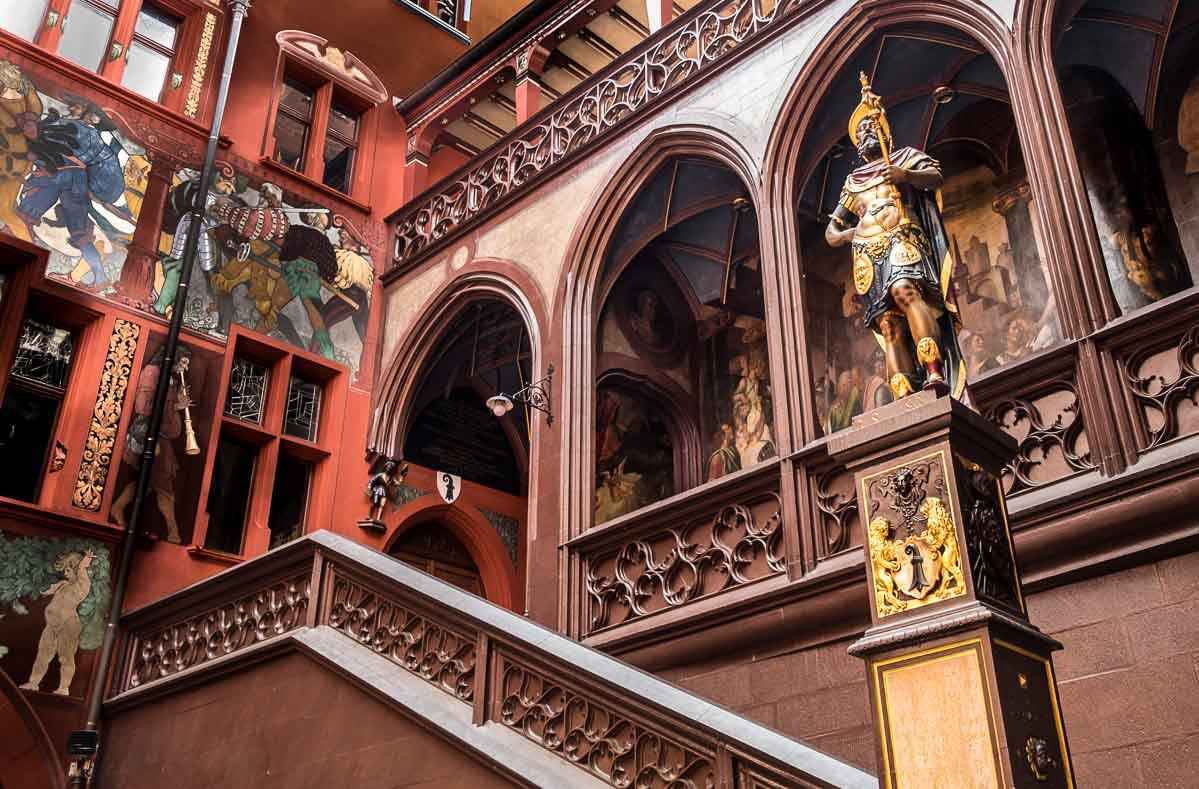
17 The City Hall of Basel is a great example of the difference between the Protestant north and the Catholic south of Europe. The iconography is of local heroes and local industry, as opposed to saints. The churches are comparatively bare.
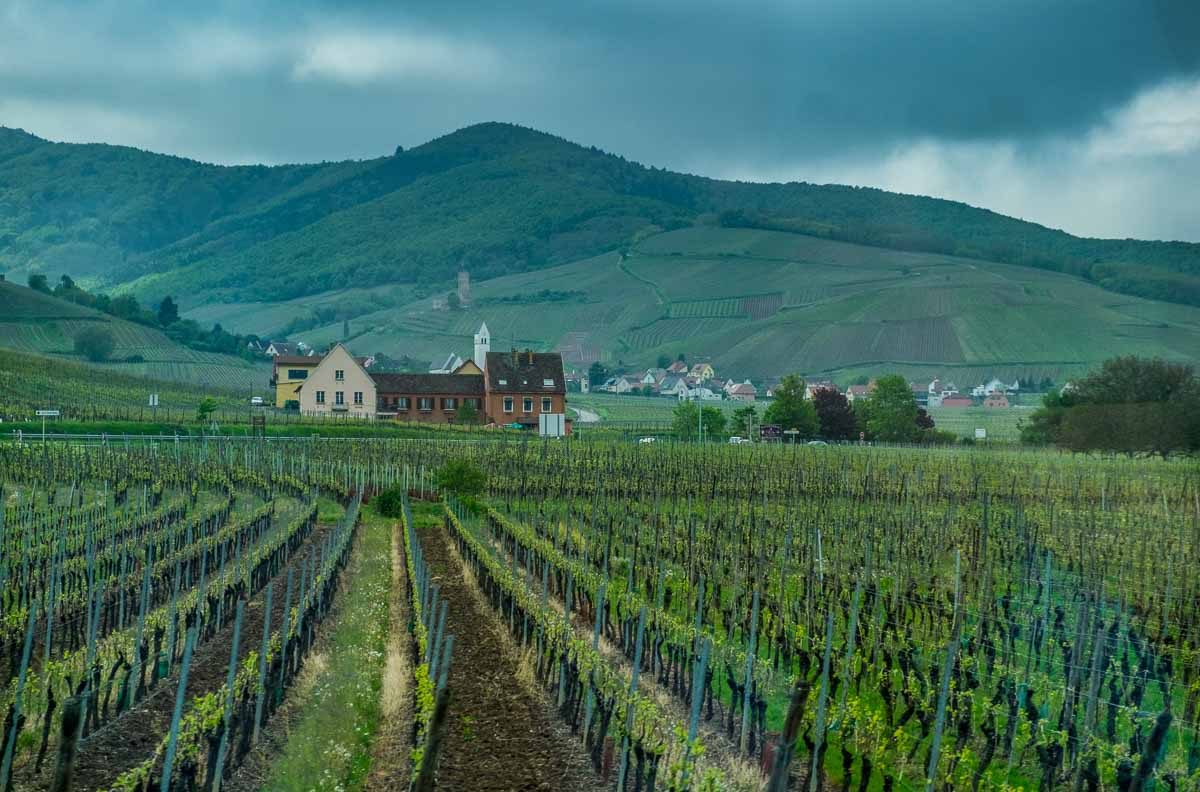
18 As part of a Viking River Cruises voyage up the Rhine River, we stopped at Colmar, France for a tour of the battlefield of the famous World War II battle of the Colmar Pocket. I had no idea the battlefield was so vast, or that the fighting so fierce. I should have known, though, because my father was a U.S. Army Ranger who was in the thick of this battle. He was wounded in Colmar by a German machine gun that broke both his legs. That wound put him out of the war and into a year's surgery and rehab.
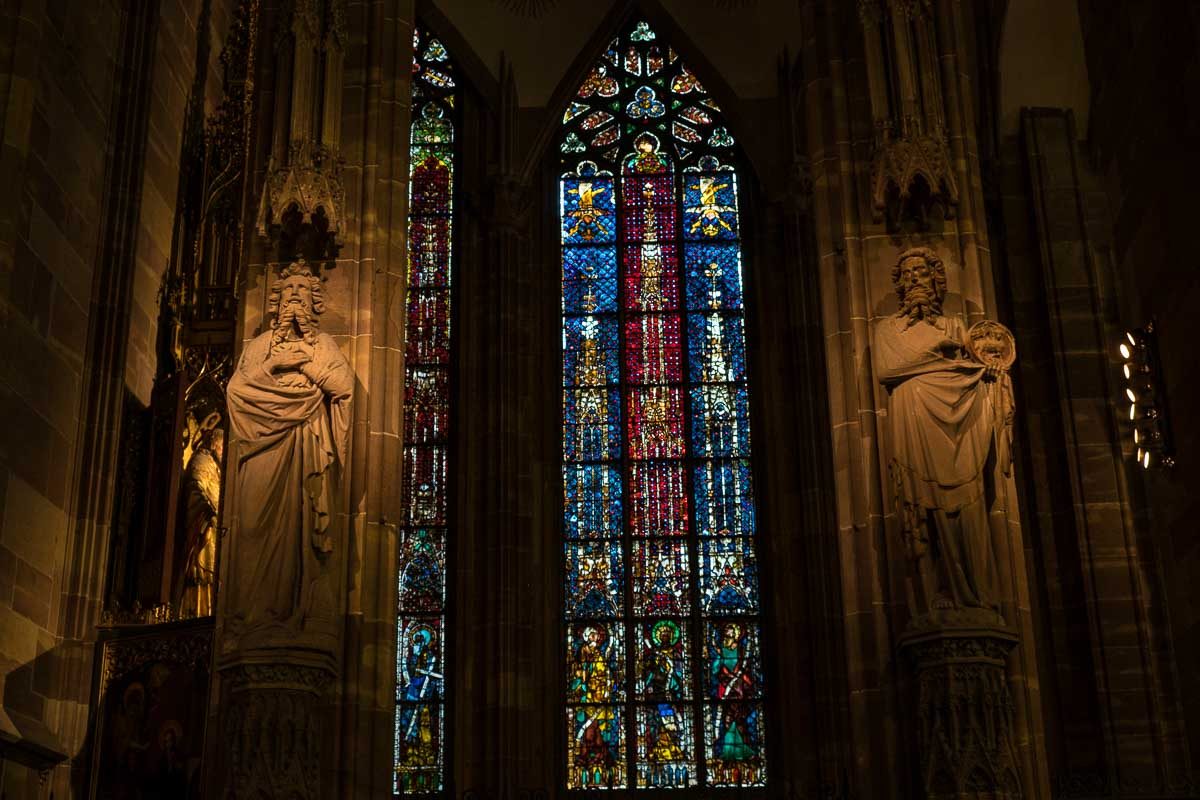
19 The Strasbourg Cathedral is one of my all time favorites. I did an entire photo essay on it once, and was all too happy to spend more time there on one of our Rhine cruise stops. It survived World War II mostly intact, which you can't say for many European cathedrals. If you're in Alsace, you must see it. And take your time so see it both inside and out. The gargoyles are among the best.
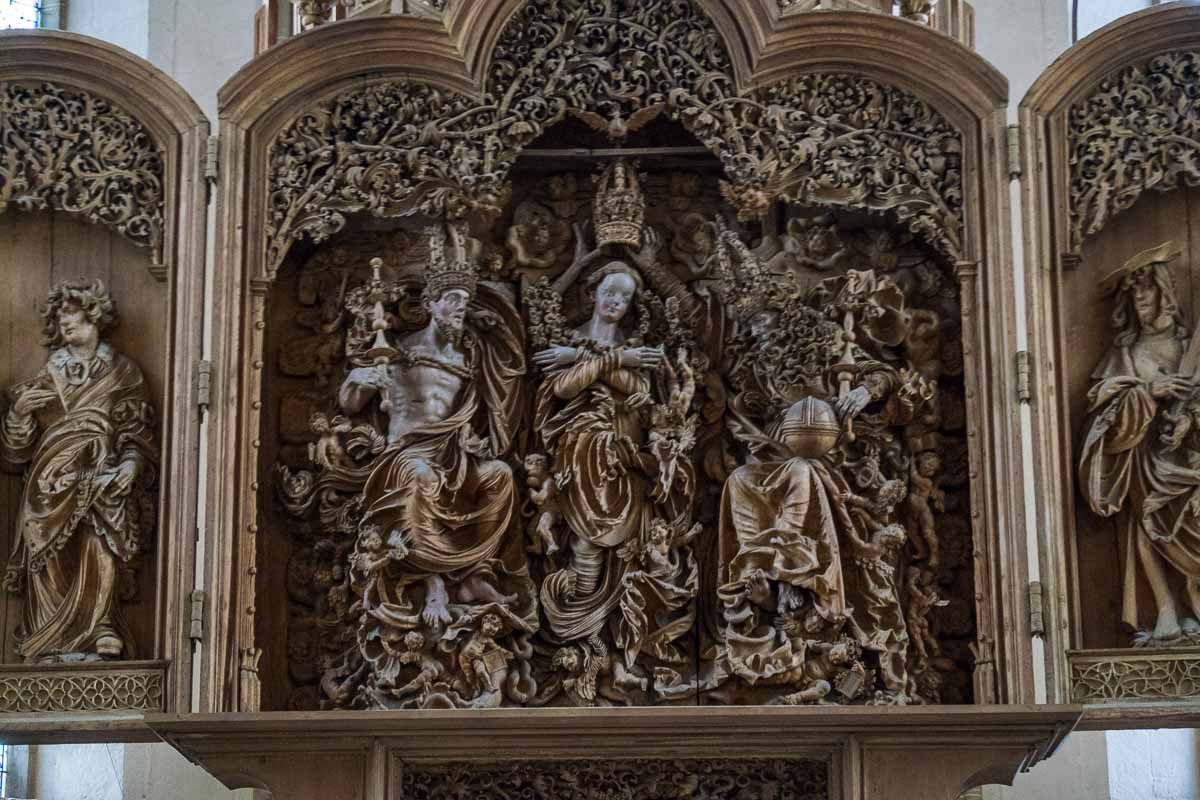
20 The small town of Breisach, Germany on the Rhine River took quite a pounding during the war, as Hitler demanded that the German border be defended to the end. As a result, of course, this town at the top of the hill was heavily damaged. Most of the original art from the main church was destroyed, but luckily the extraordinary carved wood altarpiece was removed and buried outside the city during the fighting. It now resides in a back room of the restored church. You're not allowed to get too close to it, but you can stand there and admire it for as long as you like. It's an extraordinary piece. There's lots more to see in Breisach, too. The people there have repurposed much of the ruins into what has become a city-wide plea for peace through both medieval and modern art.
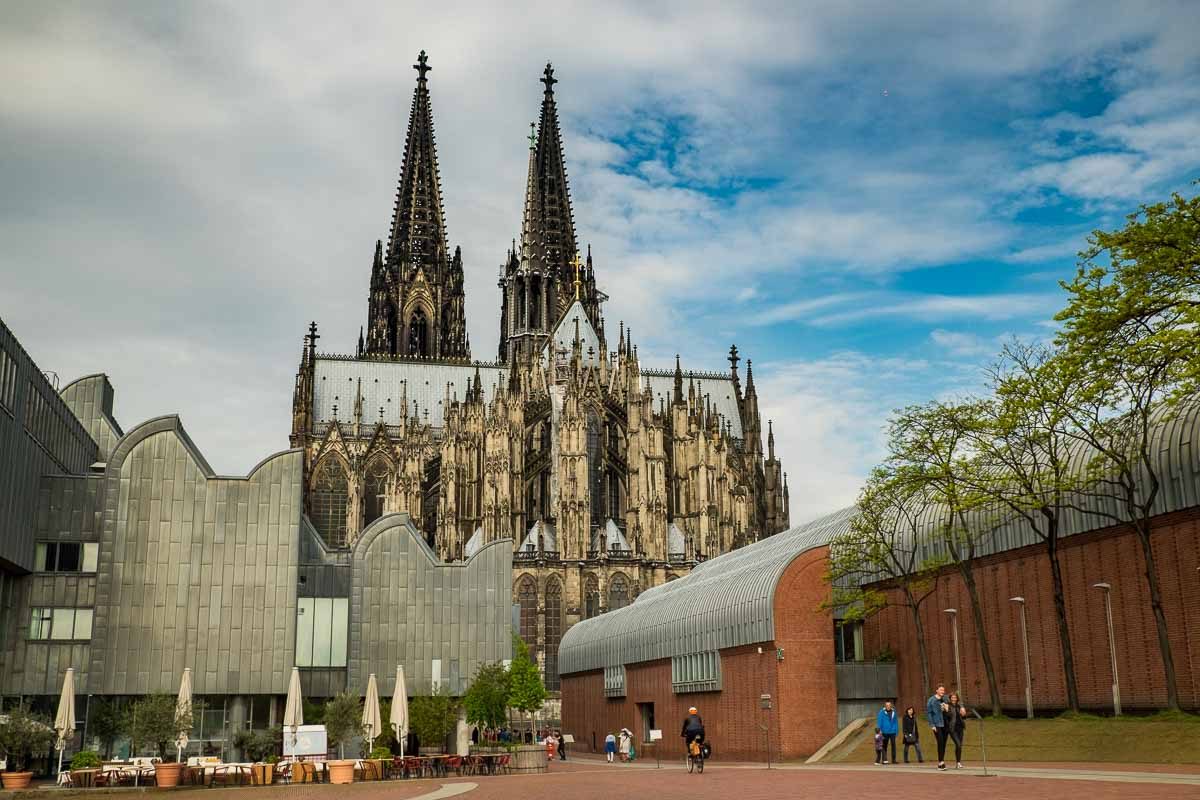
21 I love this view from near the Rhine of the medieval Gothic Köln Cathedral towering over the modernist Ludwig Museum of Art. Unfortunately our time in Köln was limited by the cruising schedule so we didn't have time to check out the Ludwig. It was a choice between the Cathedral and the museum which you shouldn't have to make. Next time, more time in Köln to see them both.
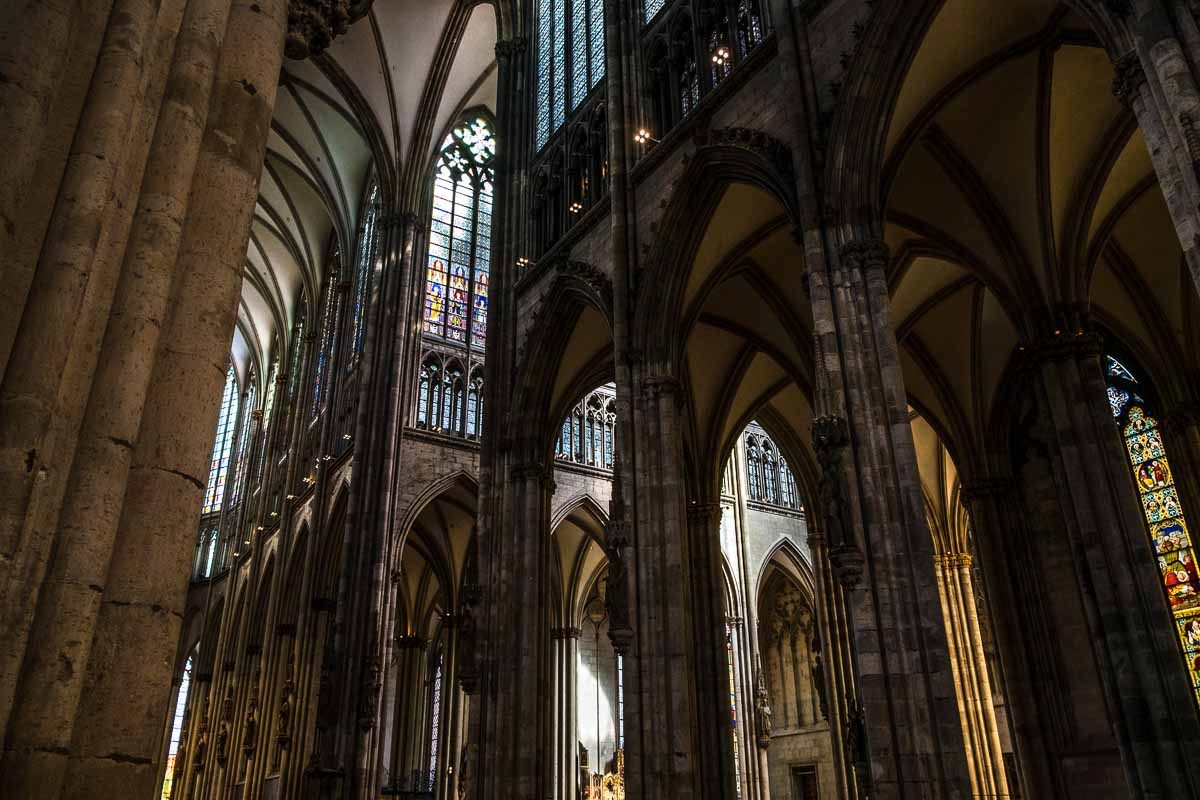
22 It wouldn't be fair to tease you with an exterior shot of the extraordinary Köln Cathedral without giving you a glimpse of the interior. I'm always amazed that any windows survived the war, or that the replacements are as beautiful as the originals. In Köln, you have some of both varieties.
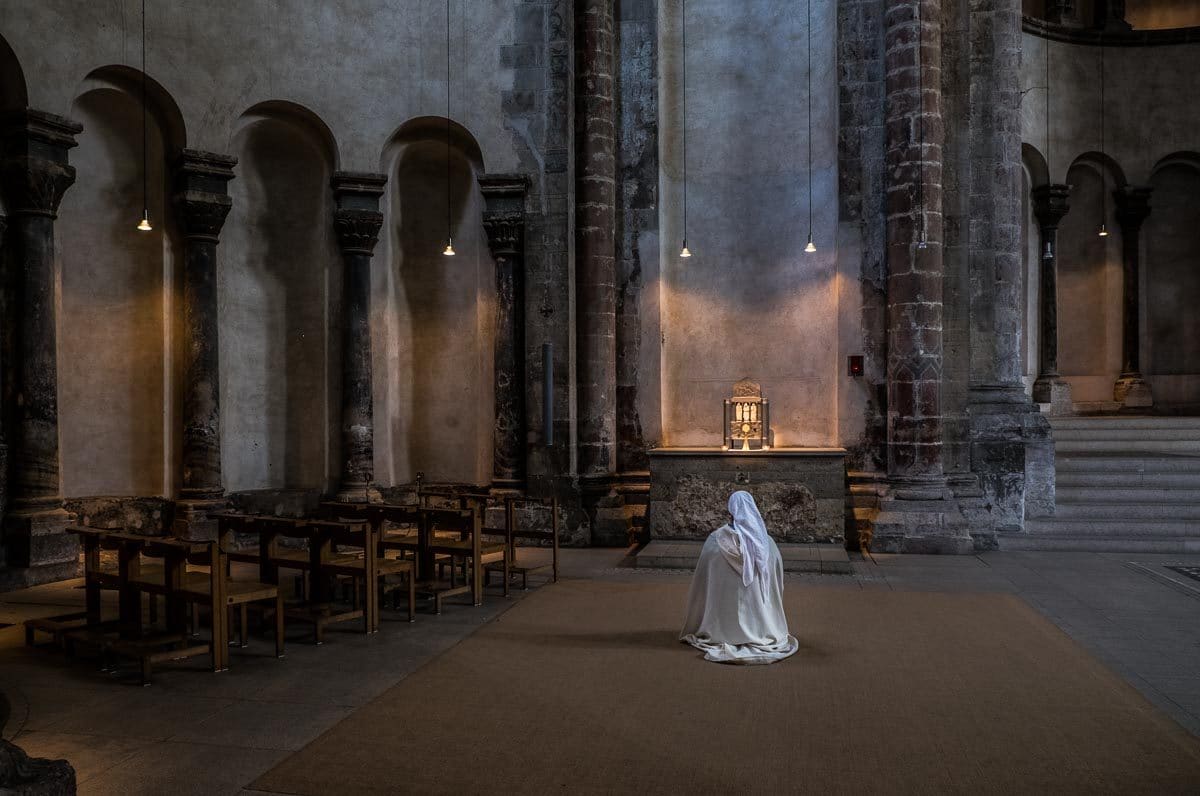
23 The Saint Martin's church was heavily damaged during the war, and the minimal reconstruction has left a very austere shell in place of what was once a repository of magnificent works. But in austerity, there is beauty, too. And remembrance of what a church is in its essence: a place for prayer.
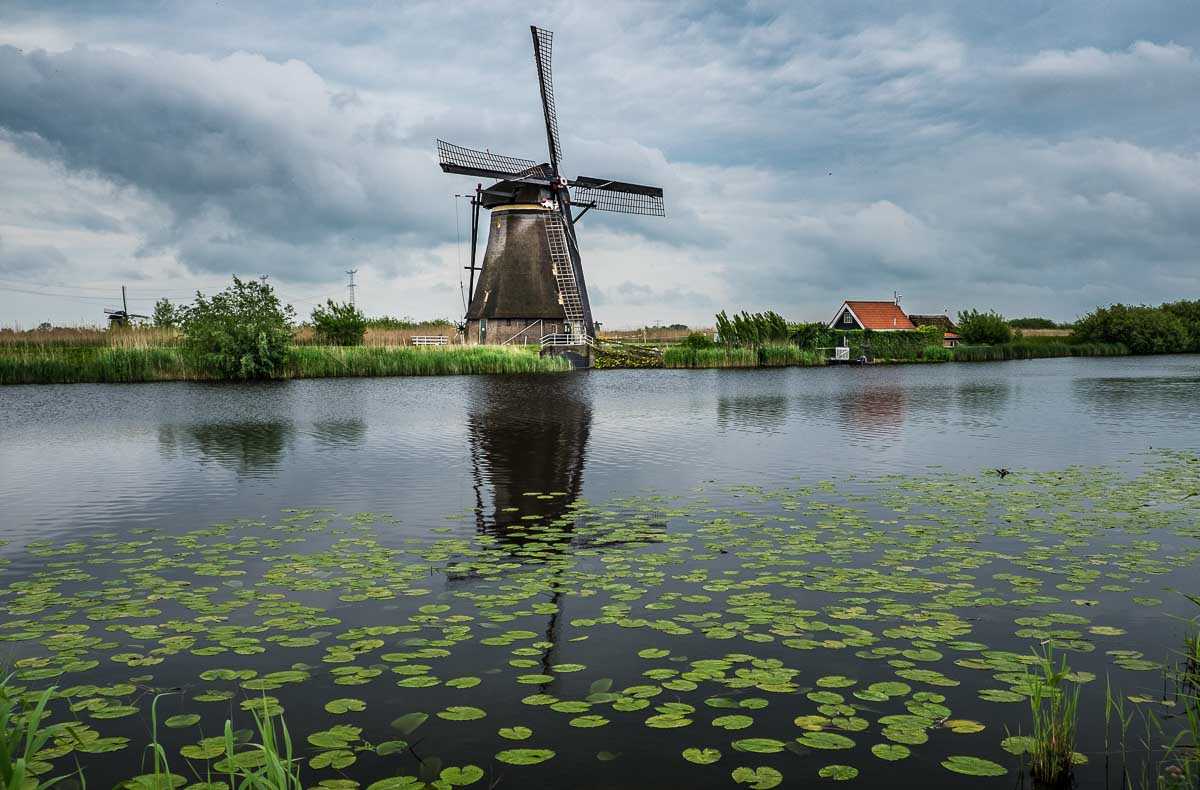
24 The 19 windmills at Kinderdijk even today play a part in keeping this part of the Netherlands dry. Although most of the pumping of the sea is now handled by powered pumps, the windmills still play a part in pumping the relentless sea back on its side of the dikes. Kinderdijk is a Unesco World Heritage site, which means the mills are beautifully and authentically maintained.
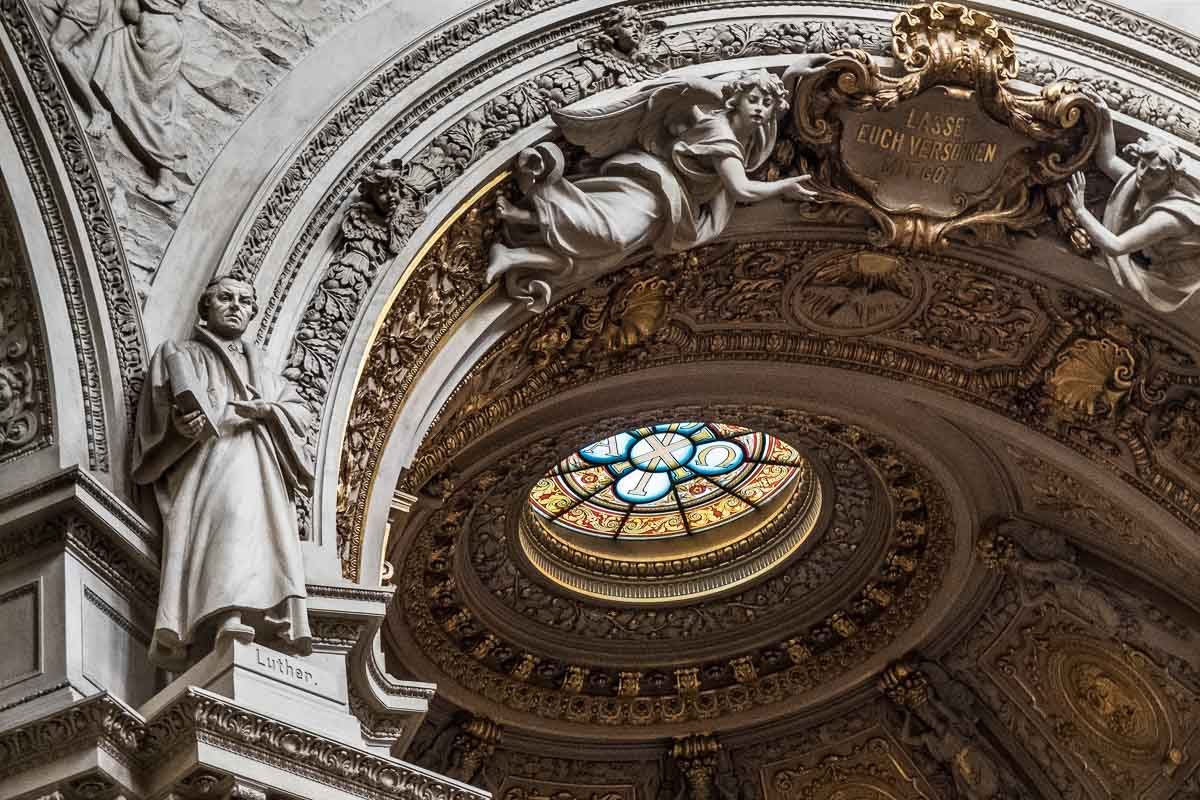
25 The Marienkirch (Mary's Church) in Berlin was pretty much flattened during the war, but was completely restored over a period of decades since then. Its neoclassical interior is highly decorated, which is unusual for a Protestant church. But it was the church of the Kaisers, and so a certain level of decoration is expected. Note, there aren't too many saints here. The figures gracing the columns are mostly Lutheran thinkers, including of course, Luther himself.
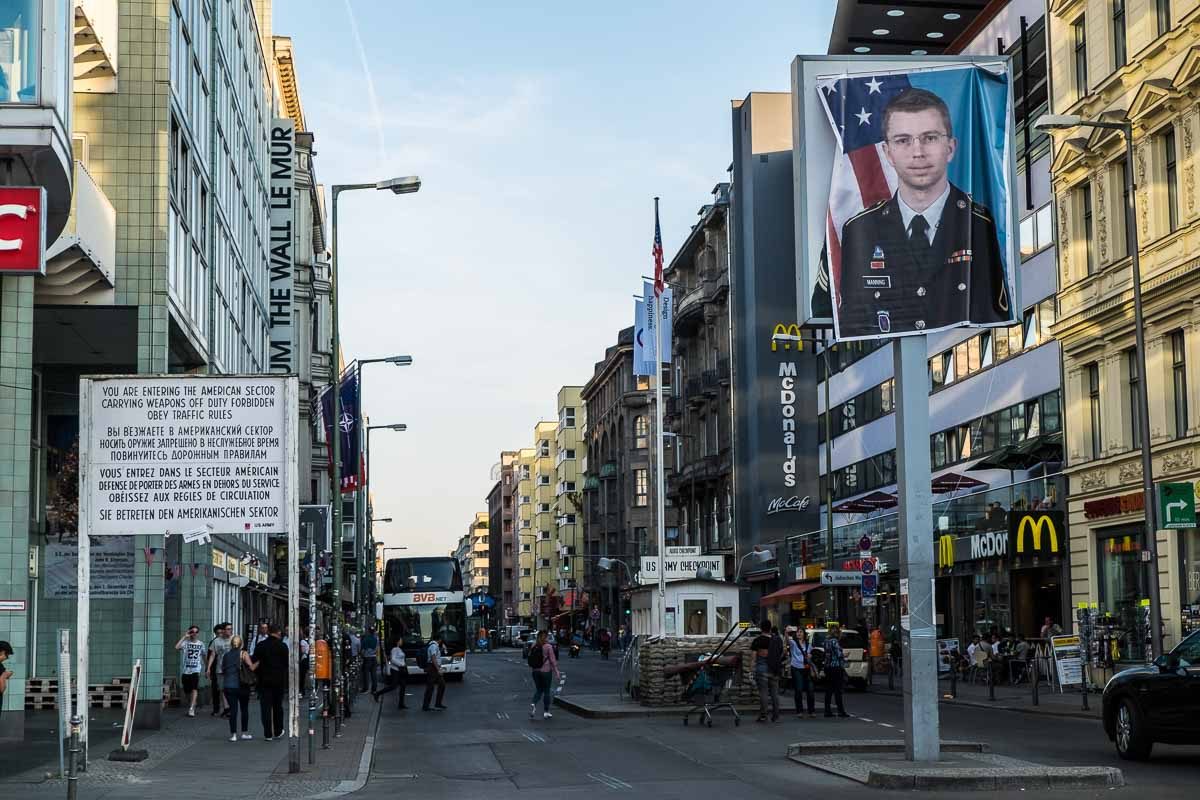
26 Except for some long spans that were turned into an art exhibit, most of the Berlin Wall is now in shards that weigh down stacks of paper on desks all over the world. But, we must remember our history so the guard house at the famous Checkpoint Charlie at the interface between the American and Russian occupied zones still exists. There's no gate now as the street goes straight through from East to West Berlin without so much as a stoplight. I especially liked that the Berliners had hung a large banner photo of Bradley (now Chelsea) Manning over the intersection.
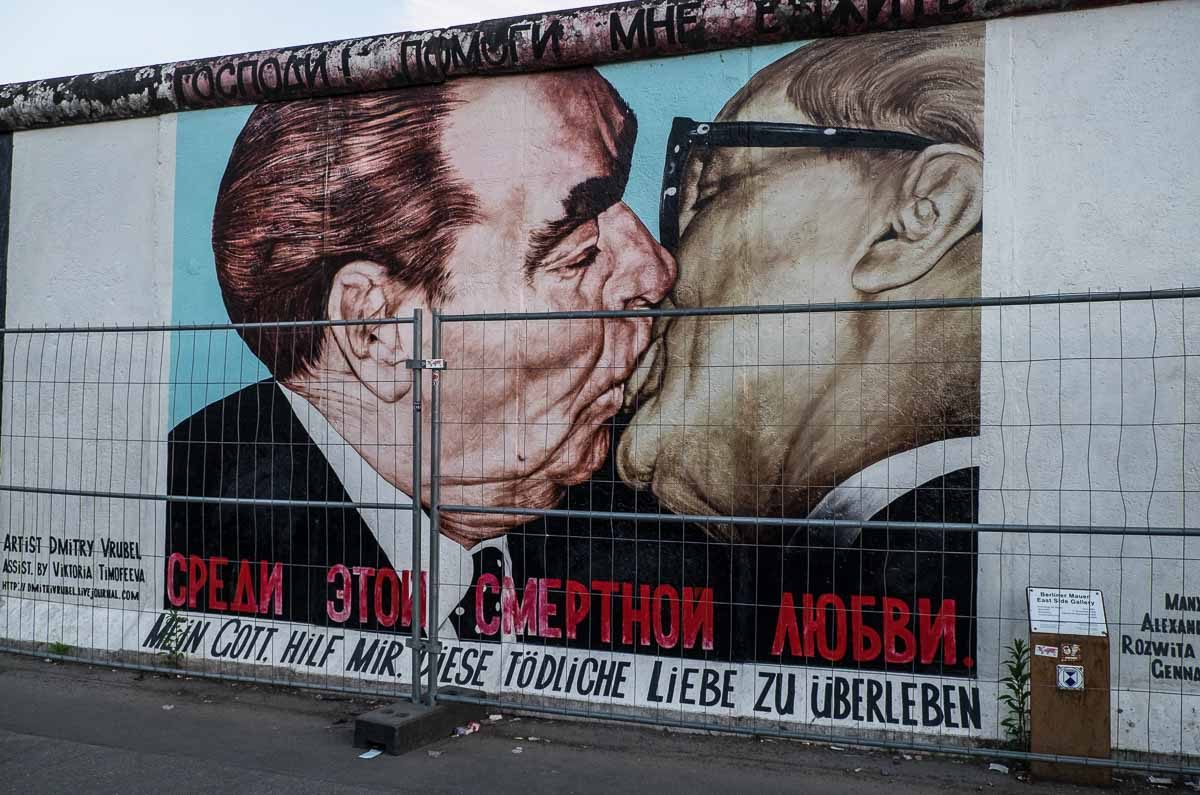
27 As I mentioned above, the Berlin Wall remnants now exist as an outdoor art gallery that features murals depicting everything from the purely whimsical to the historical and political. This painting, from a famous photograph, of Soviet Premier Leonid Brezhnev planting a friendly kiss on his East German counterpart Erich Honecker, is by Dmitri Vrubel, a Russian painter. The Russian and the German captions both translate as, “My God, help me survive this deadly love.”
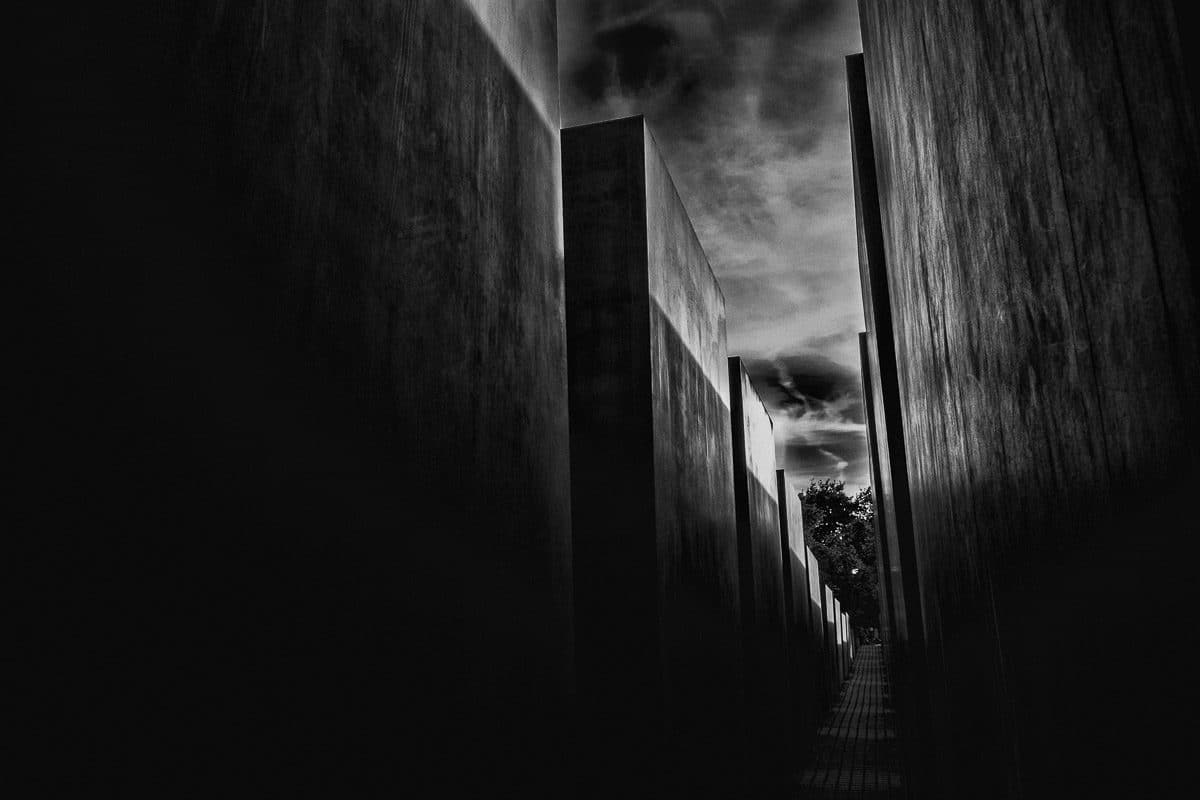
28 At least you can't accuse the Germans of shying away from their own history. The Holocaust Memorial, a field of 2711 stelae designed by the American artist Peter Eisenman, is actually named the Memorial to the Murdered Jews of Europe. That's a stark name for a stark installation, one that I think conveys itself best in black and white.
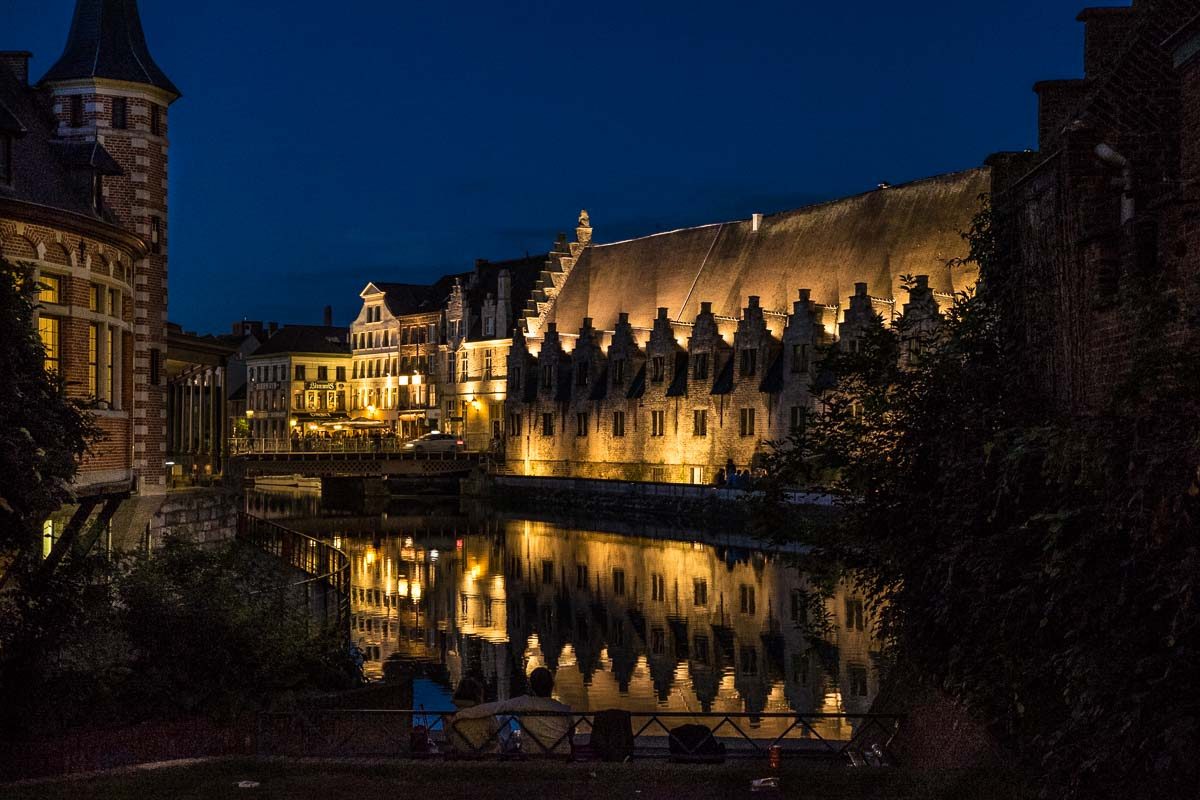
29 Ghent is one of my favorite cities, and not just because it's the home of perhaps the most extraordinary piece of European Renaissance art, the Ghent Altarpiece. Read the book, The Monuments Men, if you want the story of how it was rescued during the War. But the city is just beautiful, with row after row of beautiful buildings and churches surrounding the Lys river, and a cafe culture that perfectly complements the lazy pace of the waterway. We wrote a chapter on Ghent for a National Geographic book on travel for couples, if you'd like more info.
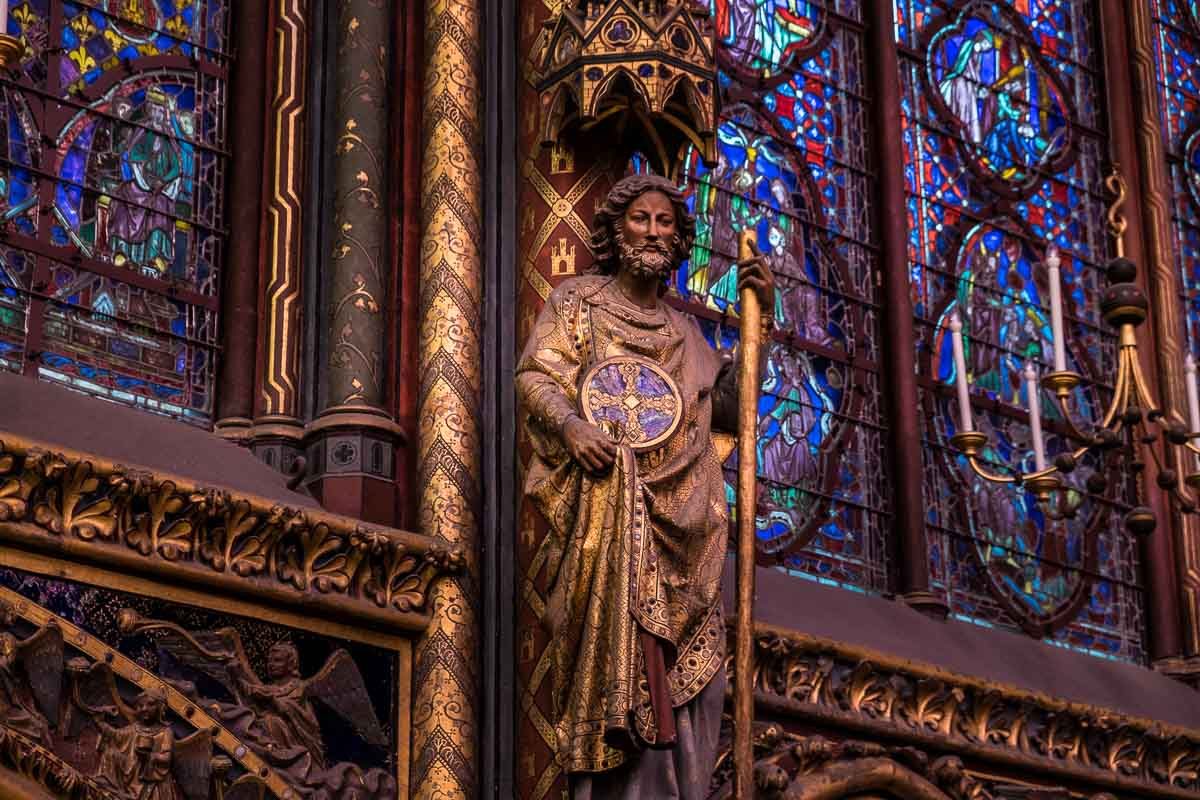
30 The Sainte Chapelle, the Holy Chapel, of Paris was built by King Louis IX of France in the 13th Century to house his collection of holy relics, including the original crown of thorns. (Yeah, right.) Anyway, it's a remarkable piece of Gothic architecture that presents one amazing tableau after another of sculpture framed by extraordinary stained glass. We've visited Paris six or seven times, and had never seen this church, even though it's within easy walking distance of Notre Dame. We made a point of seeing it this time, and were kicking ourselves that it took so long to get there.
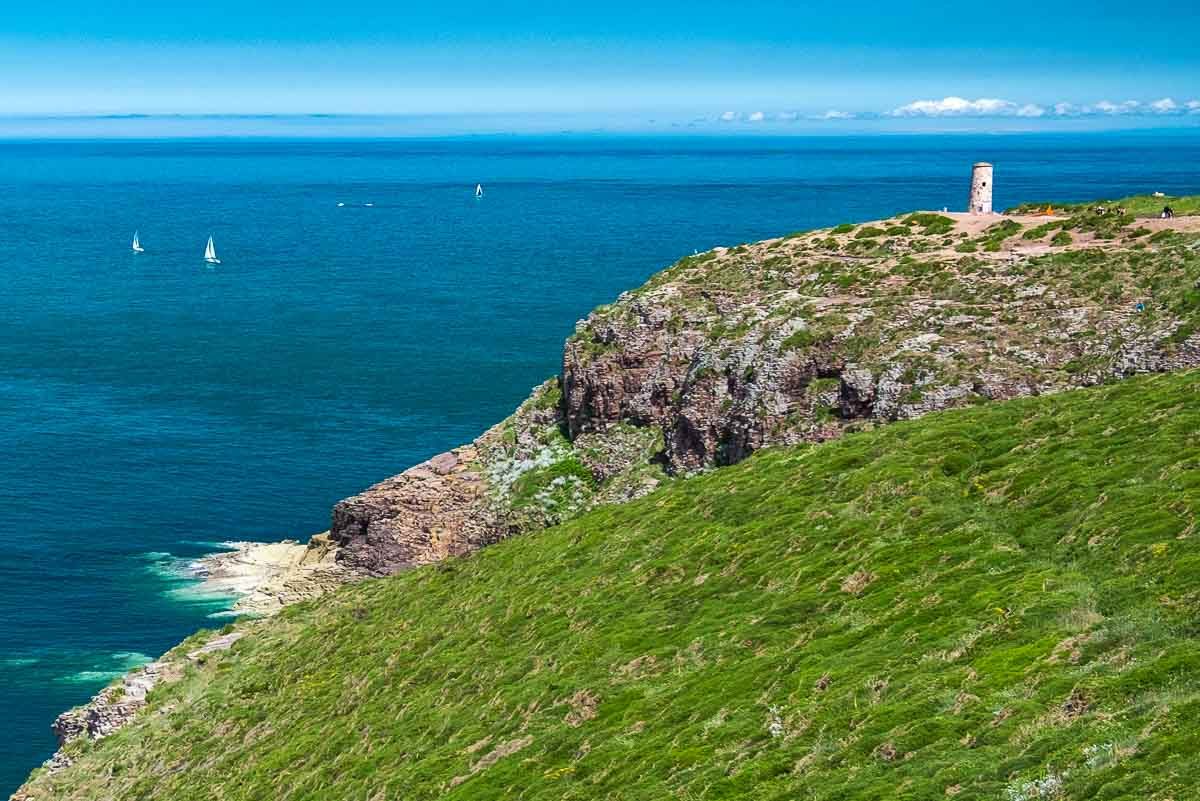
31 Our first rest stop on our first day of biking around Brittany. There was one seascape after another on the route, but this one was particularly picturesque and merited a longer stop to gape, and have our lunch of bread and cheese.
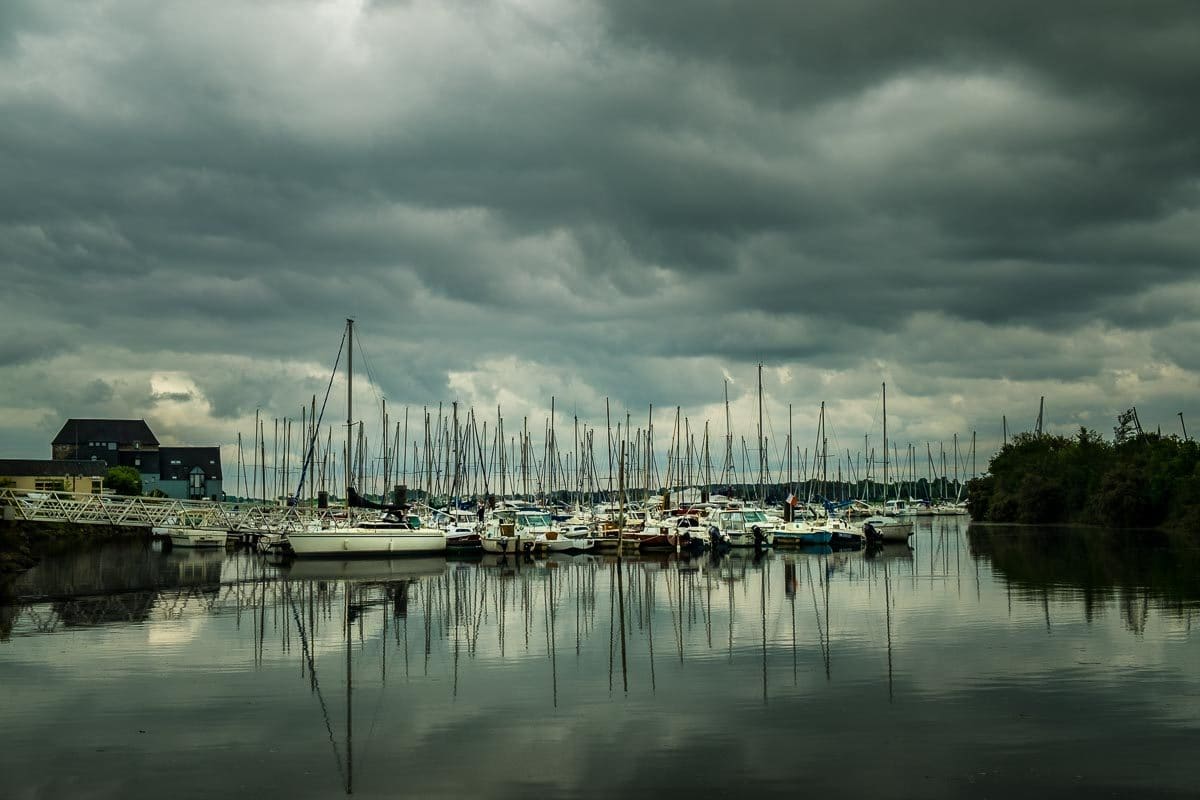
32 Another lunch stop precipitated by hunger, and a sprinkling of, well, precipitation. The rain stopped during our lunch, and we were left with this cloudy, dramatic view of the boats in the harbor.
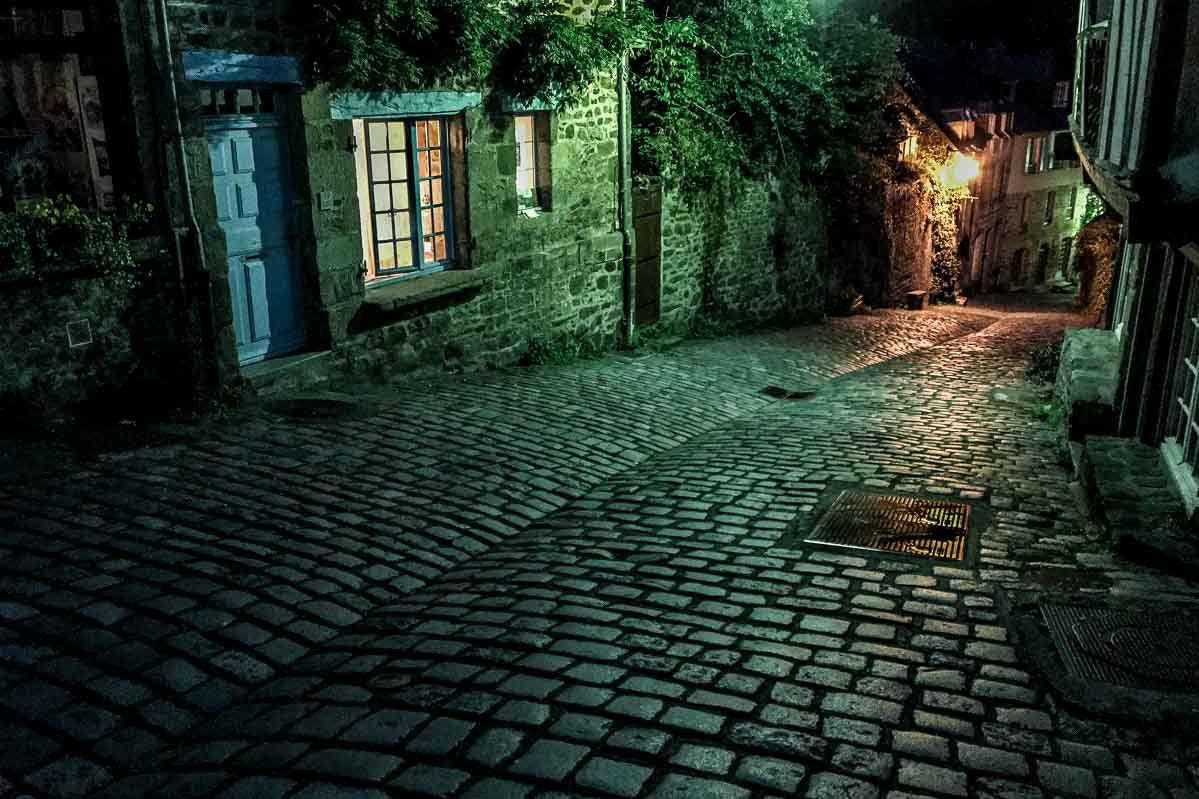
33 The Unesco World Heritage town of Dinan in Brittany lived up to its billing as one of the most beautiful in France. A walled town at the top of the steep hill, we walked up for dinner after parking our bikes at our hotel at the bottom of the hill along the river. It got dark as we dined, and we enjoyed the atmosphere and the glow of the street lights and our bottle of wine on our way back to bed.
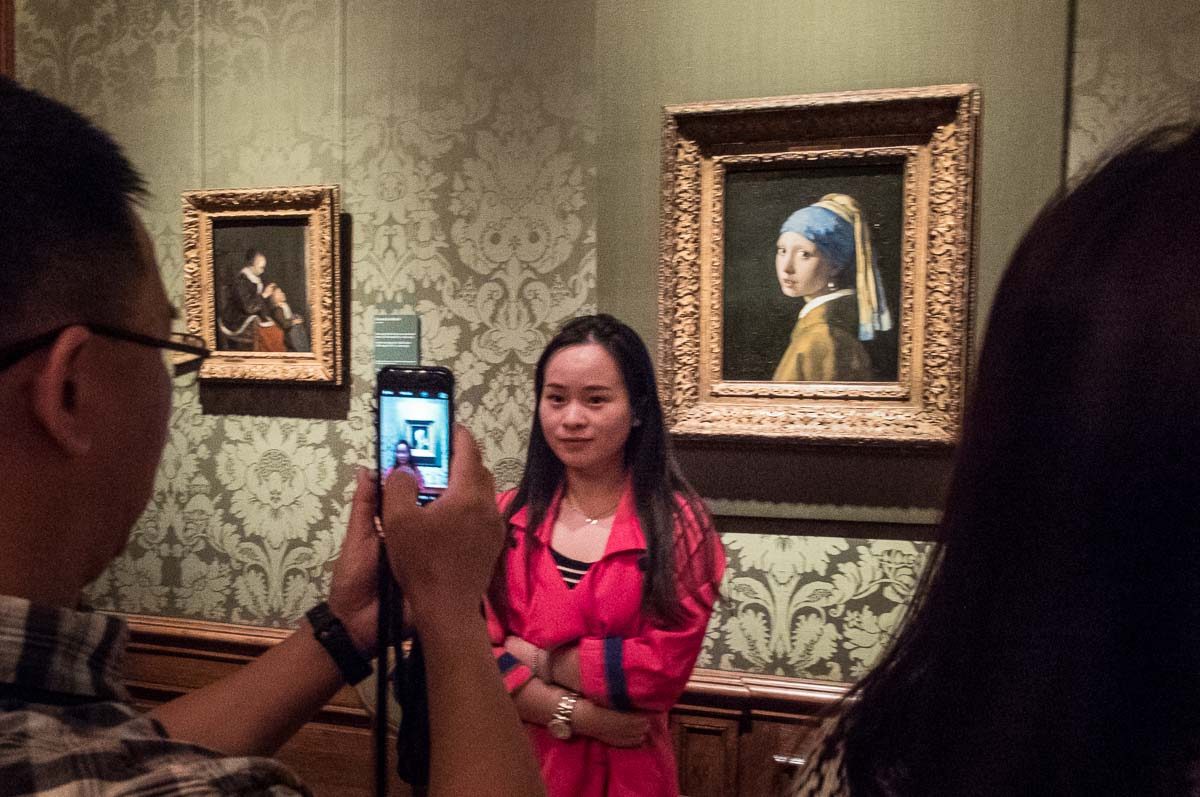
34 One of my great regrets in life is that I traveled all the way to the Mauritshuis in The Hague, Netherlands just to see their collection of Vermeer paintings and I forgot to take a picture of me. Oh well, maybe next time.

35 I spent two days and nights shooting the dirt track racing at the nearby Wisconsin track. I made more than a thousand exposures of cars tearing by. Some of them were pretty good, I think. But this shot, more than any of the cars, sums up the race meet. This is what you see when you get out of the liberal cities.
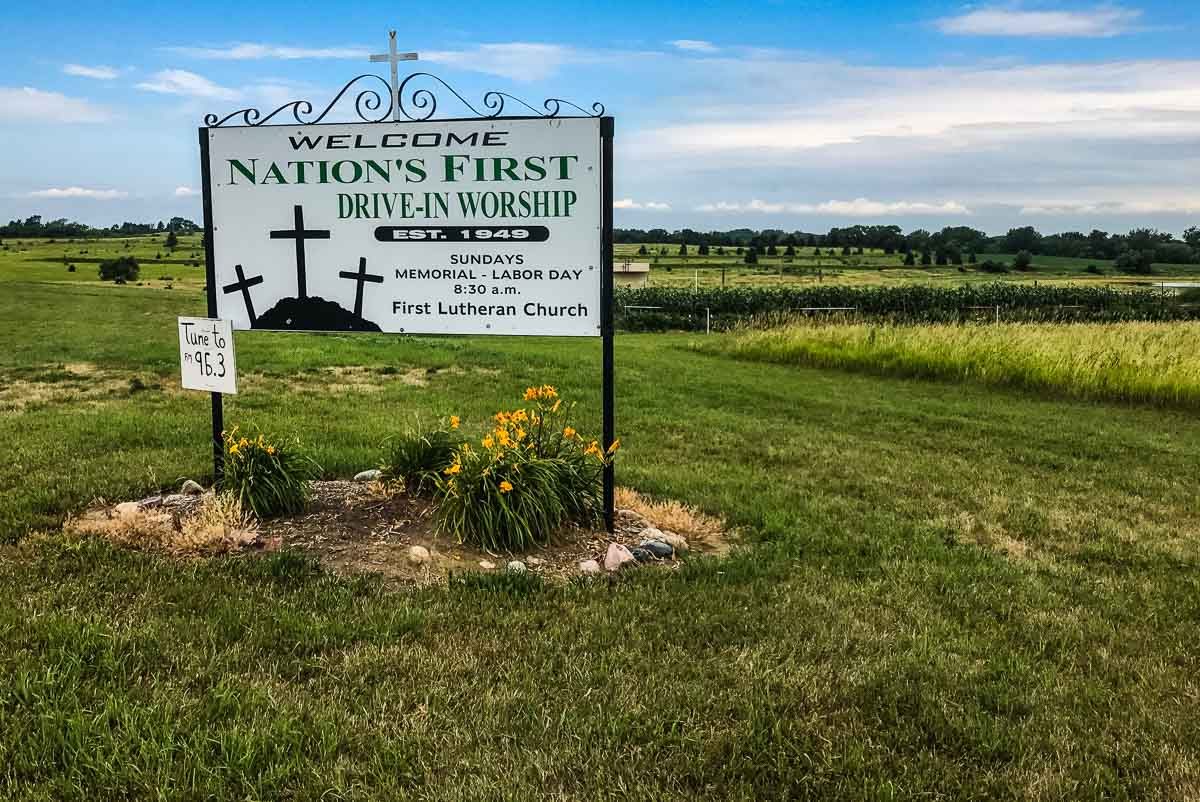
36 Our family meets up once a year at Lake Okoboji, also known as the Iowa Riviera. This year, I took a 20 mile bike ride around the lake by myself. I've driven the route a hundred times, but riding the bike allows you to approach the lake more closely and see things you can't see from the road when you're going by at 60 miles an hour. I can't believe that I missed this opportunity for all those years.
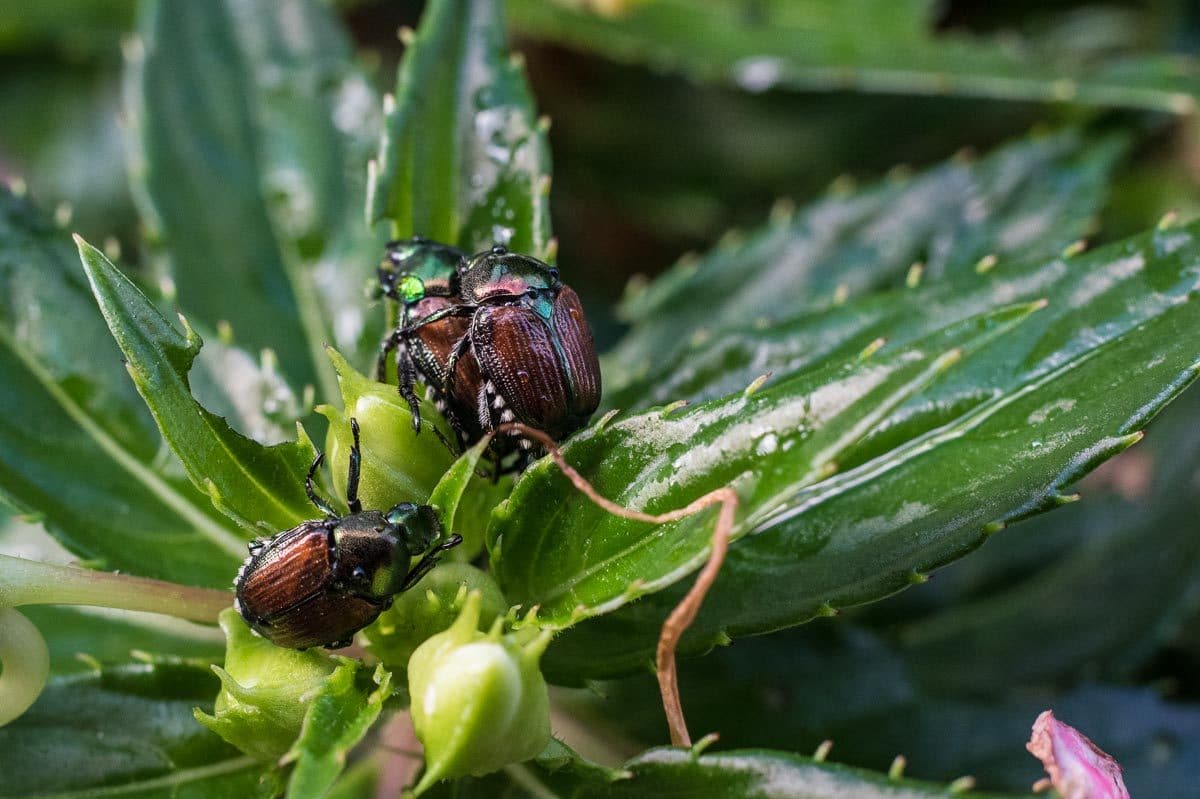
37 Sometimes I can't resist buying a new piece of camera equipment, especially when the equipment is used, and cheap. I bought a couple of macro rings online, that turn a normal lens into an extreme closeup lens. So, to try it out, I took it onto our apartment's front porch to shoot the flower pots we put on our front gate as a pathetic reminder of the extensive landscape we used to have when we had a big American house. Minnesota had an invasion of Japanese beetles this summer which turned all the leaves on the trees on our street to lace. I got a shot of these guys just before they did the same to our flowers. The next day, they, and the flowers and leaves, were gone.
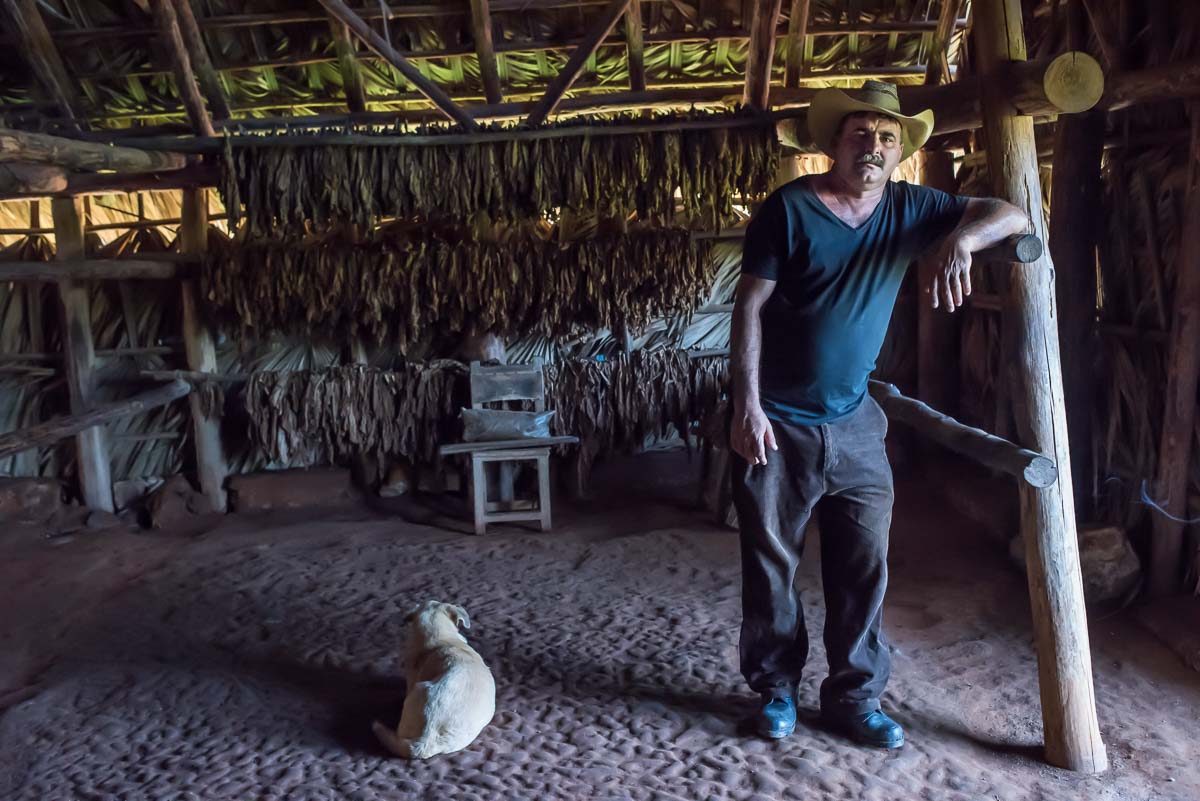
38 I got back to Cuba in August to scout for a possible tour we hope to lead. As part of the obligatory “People to People” rubric, I visited a tobacco farm. There I got Benito, and his dog, to pose in his drying barn. I think Cuba is the most photogenic place I've been, by the way.
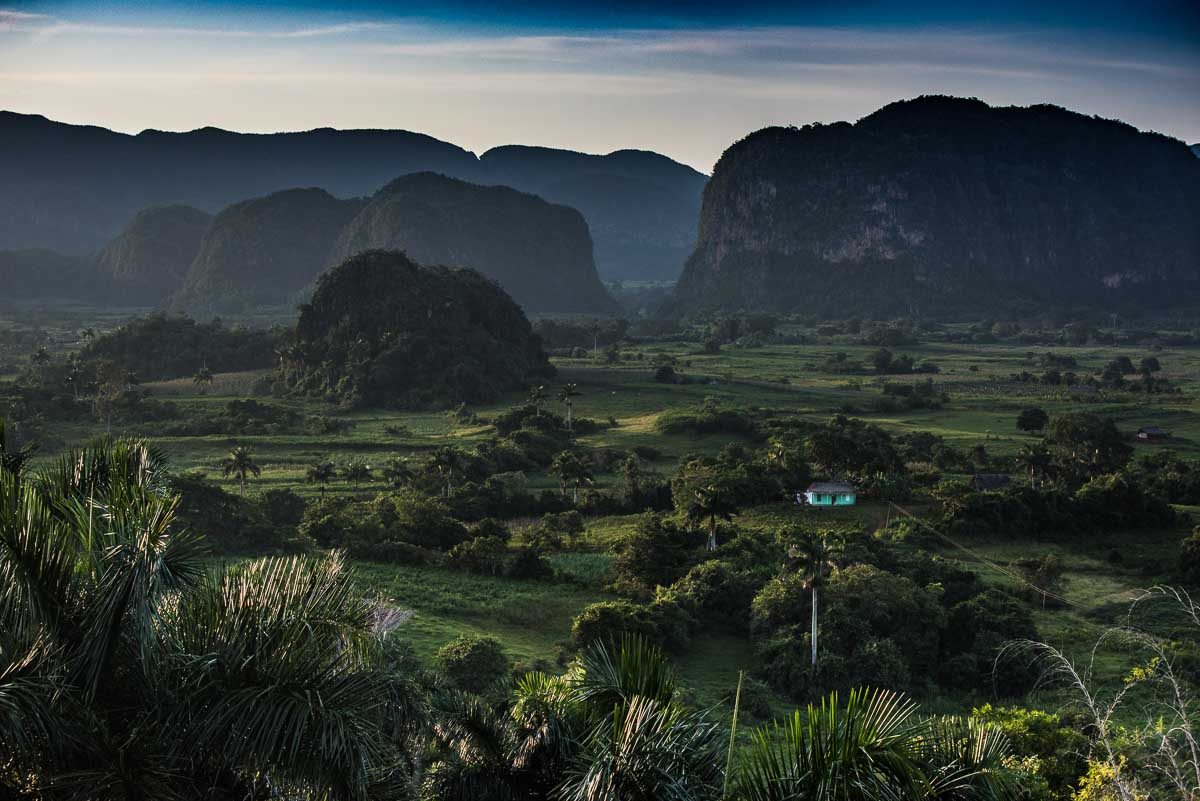
39 As I said above, Cuba presents not only a million opportunities for street photography of people, but the landscapes are kind of nice, too. This is the Unesco World Heritage Viñales Valley at sunset.
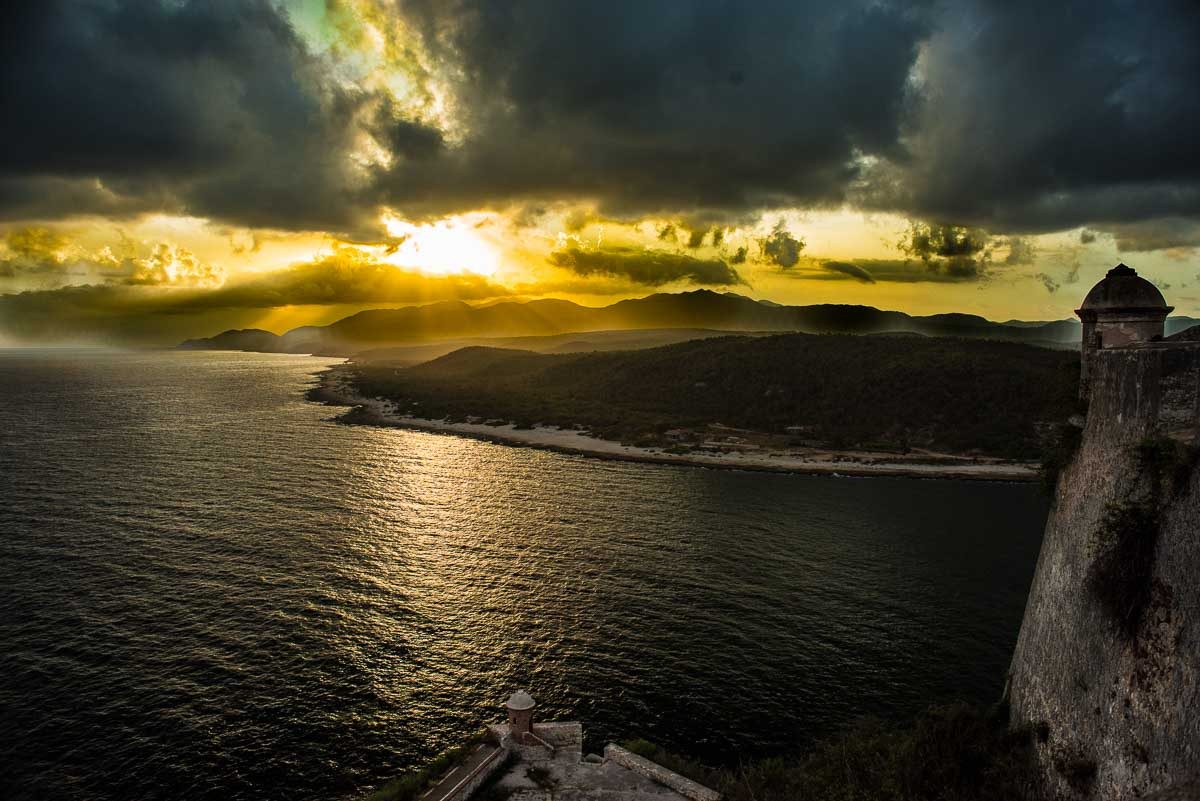
40 The fortification at El Morro, formally known as the Castle of Saint Peter of the Rock, on the Santiago coast is yet another Cuban Unesco World Heritage site. And not just because they have sunsets like this one. I was so glad I was able to get to the east side of the island on this trip and see Santiago and Holguin. The east side of Cuba is completely different in landscape and attitude from the west, where Havana dominates.
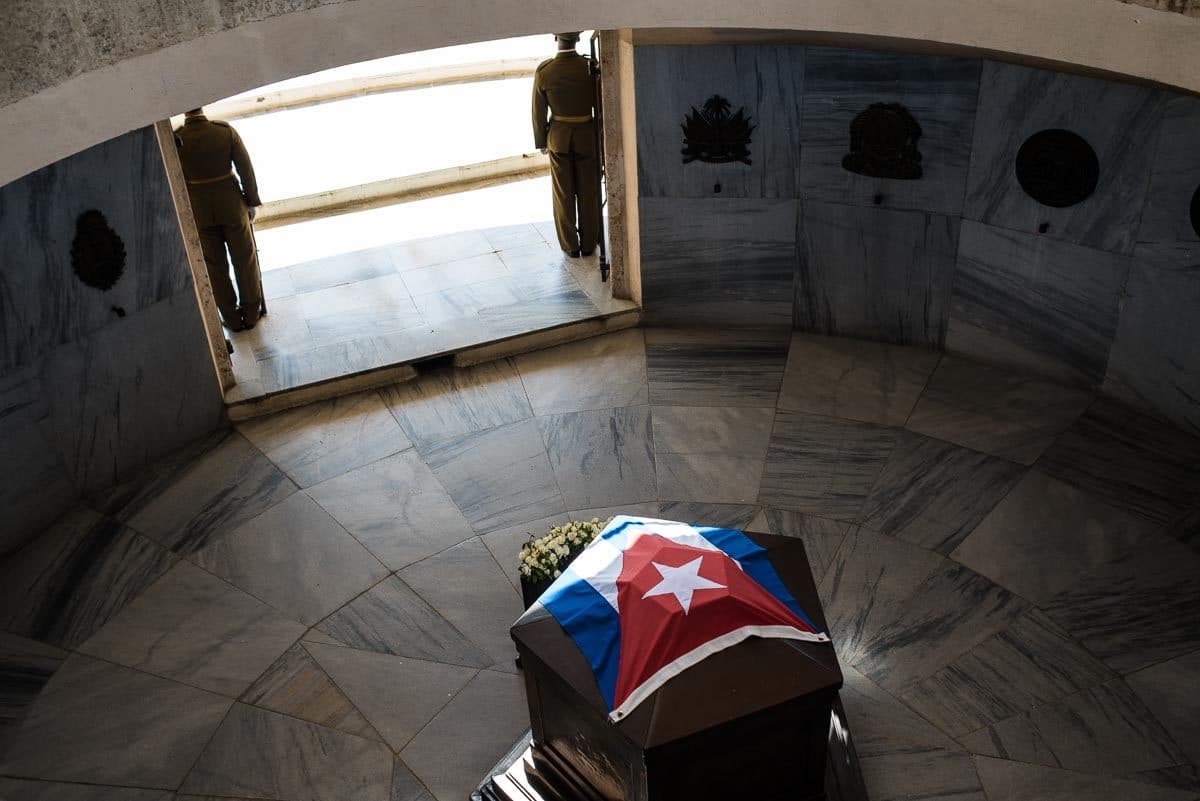
41 The tomb of José Martí in Santiago is just a few steps away from that of Fidel Castro. Martí was a famous poet who led one of the early revolts against the Spanish in the late 19th Century. He was killed in battle in 1895 in the precursor revolution that eventually morphed into the Spanish-American War, which ended up replacing the Spanish colonial rule with American colonial rule.
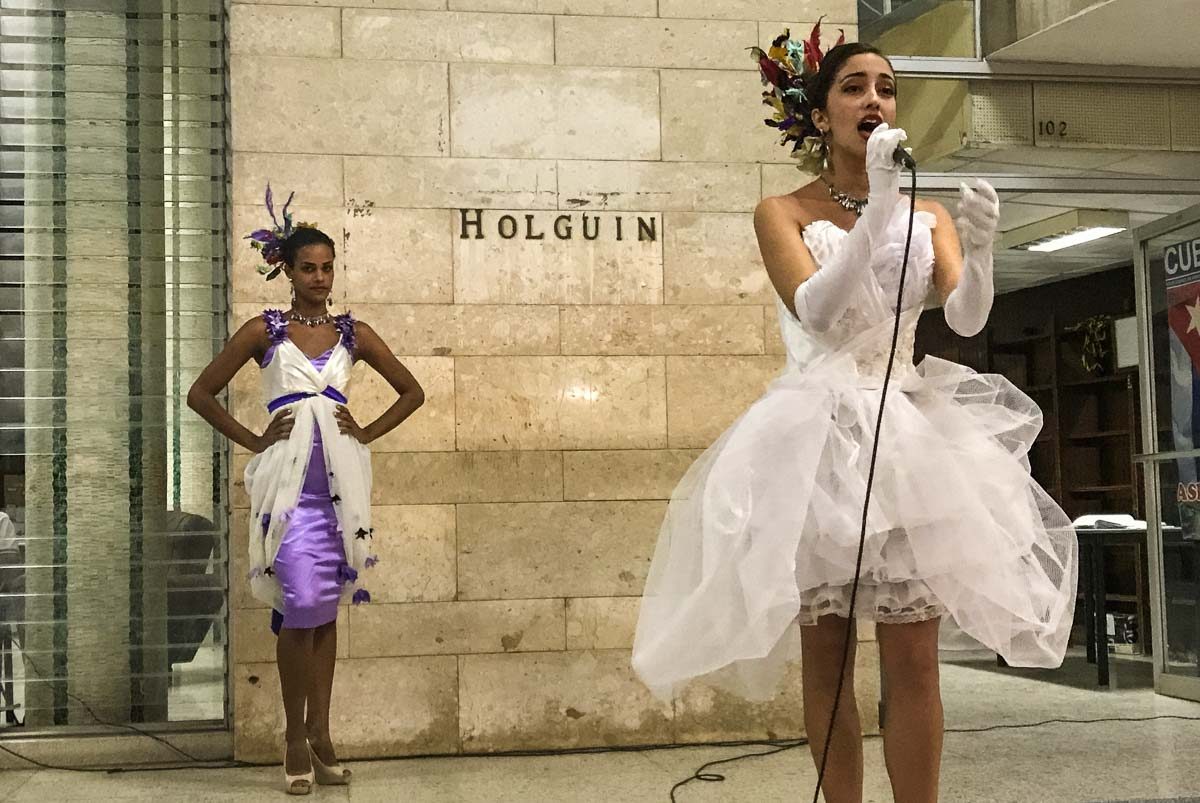
42 Sometimes just wandering around leads to unexpected pleasure. I was strolling around the town square of Holguin, looking for something to eat and a beer, when I came upon the city library, where they were setting up a couple rows of folding chairs on the sidewalk. I asked what was going on, and they said there was going to be a fashion show, with singing. Soon appeared some lovely models in evening dress, and this woman, who I think is a singer with the Cuban National Opera. If she isn't she should be. She was fantastic.
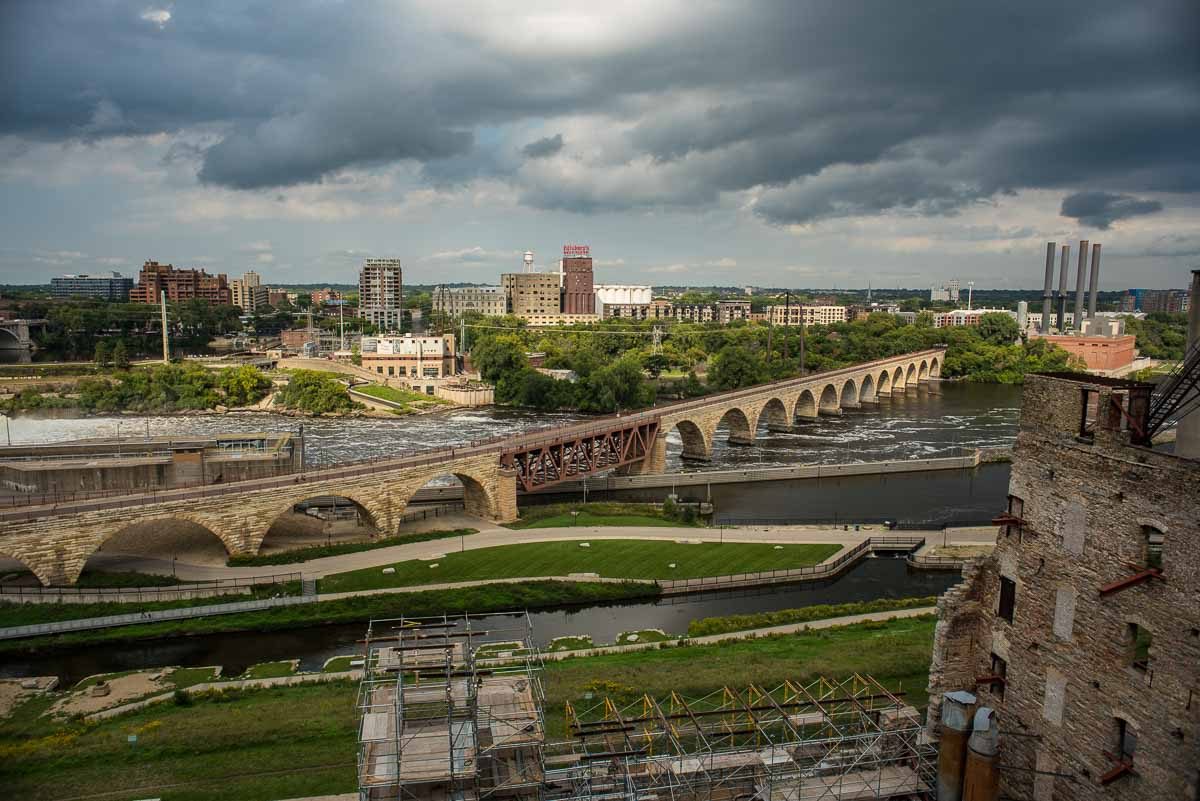
43 Sometimes you have to look at what you see every day as if you were a tourist in your own town. We got to do that this year, courtesy of the Meet Minneapolis tourist board and the AC Hotel in downtown Minneapolis, where we were squired around to Minneapolis attractions as if we were visitors. This is the view of the Mississippi River from the roof of the Mill City History Museum, which is well worth a visit if you come here. Or even if you live here. It's nice to know the history of your own hometown.
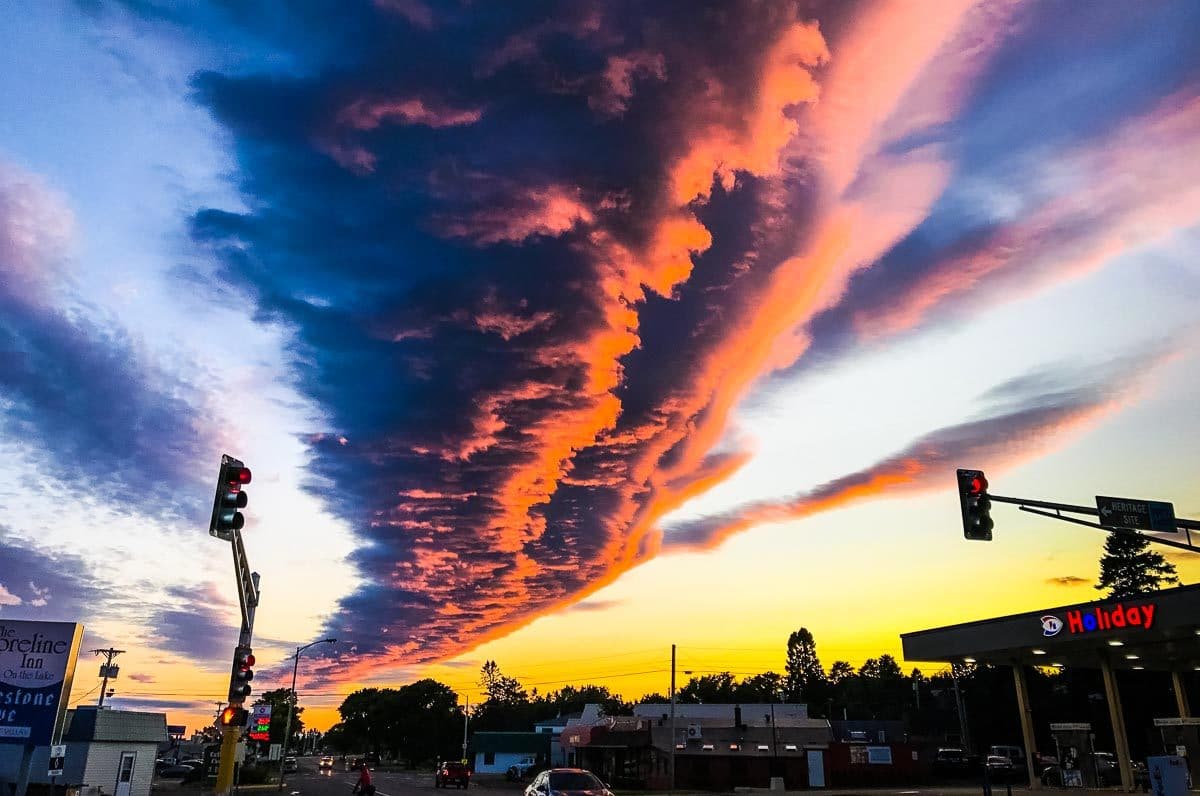
44 Thank god for phone cameras. I'd been traipsing all over Grand Marais, Minnesota all day trying to get a defining shot of the classic small town on the north shore of Lake Superior. I got a couple I sort of liked, and so left the big camera in our hotel room and went out to dinner. As we came out of the restaurant to walk back to the hotel, I noticed sort of a red cast to the light and turned around to see this incredible cloud, colored crimson courtesy of the multiple forest fires in the west.
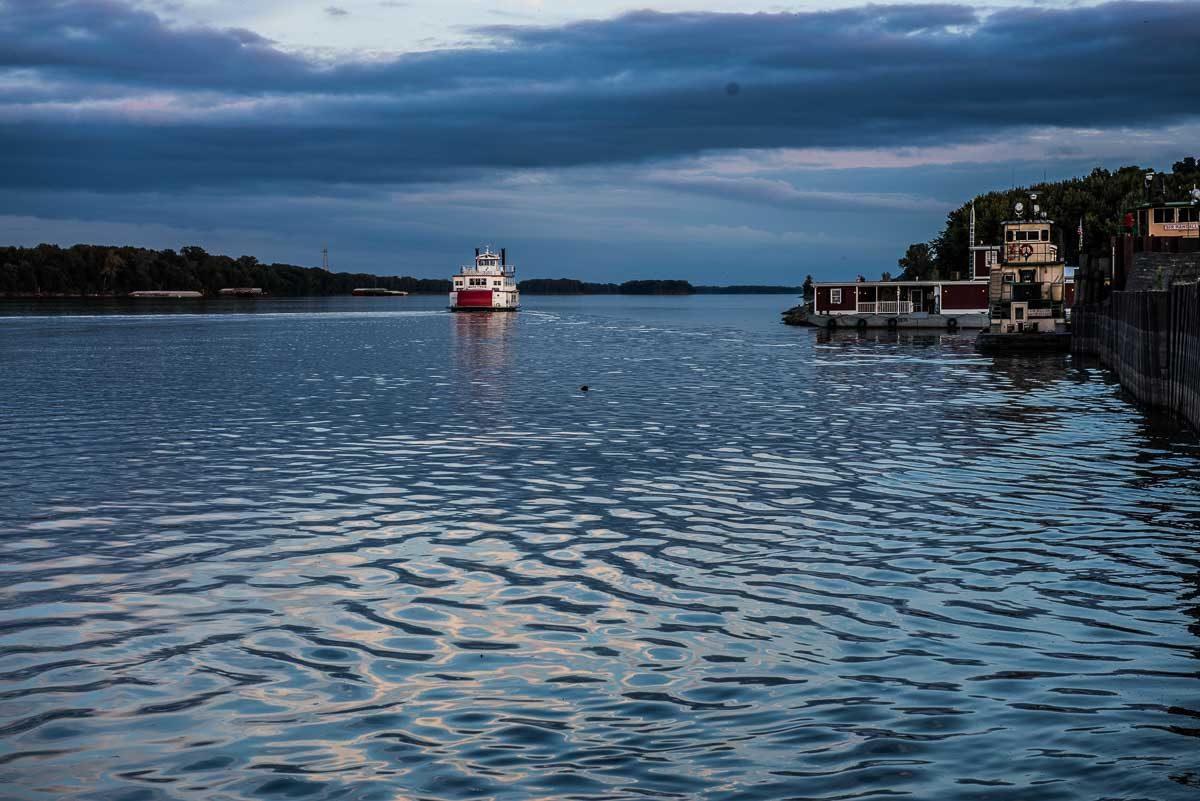
45 The town of Hannibal, Missouri is in large part a museum dedicated to its most famous son, Mark Twain. So as we ambled past the shops and actual museums down to the river which played such a big part in his life and writing, it was just luck that we got to see a steamboat, which plies the wide river as an homage to Twain and the Mighty Mississippi.
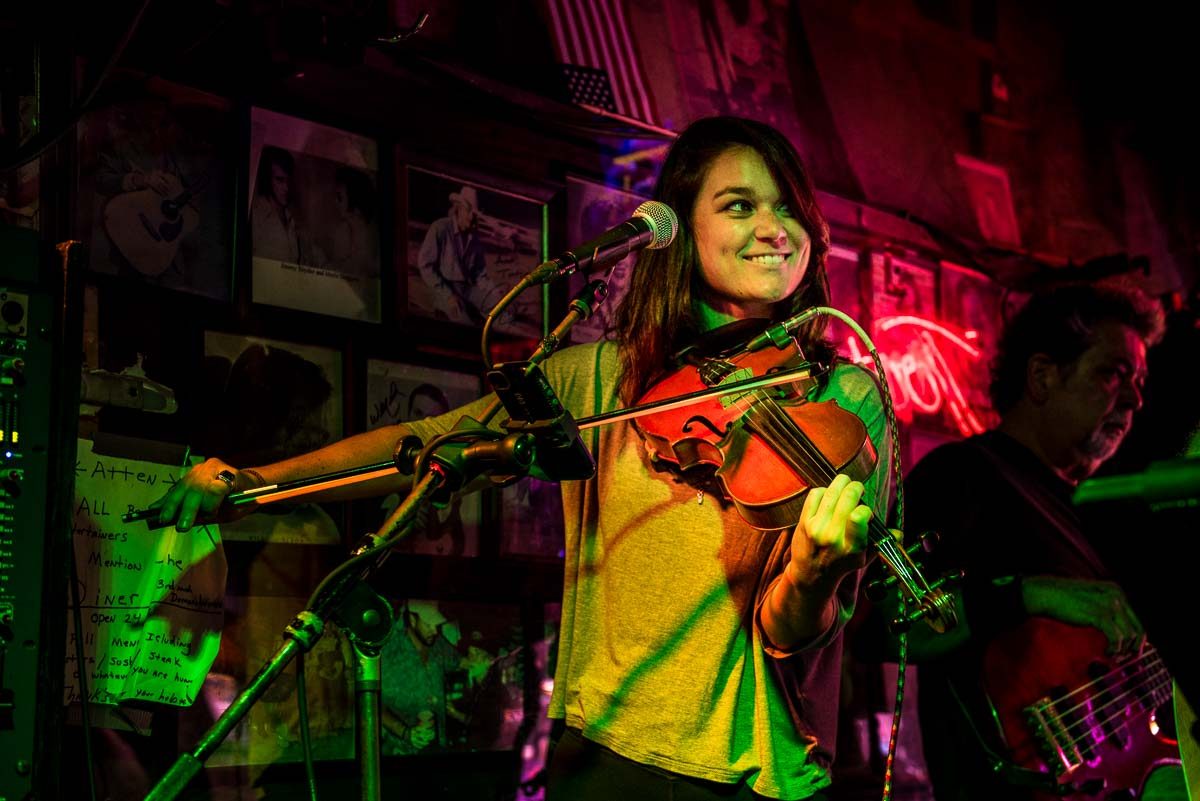
46 We took a road trip to Nashville, Memphis, and northern Mississippi, all of which are home to clubs where you can just walk in, order a beer, and listen to some of the country's most accomplished musicians wail for free all afternoon. I never caught the name of this band or of the fiddler/singer we heard at Tootsie's in Nashville, but I can tell you you should wander into Tootsie's next time you are in town on the off chance you might hear them. They were good.
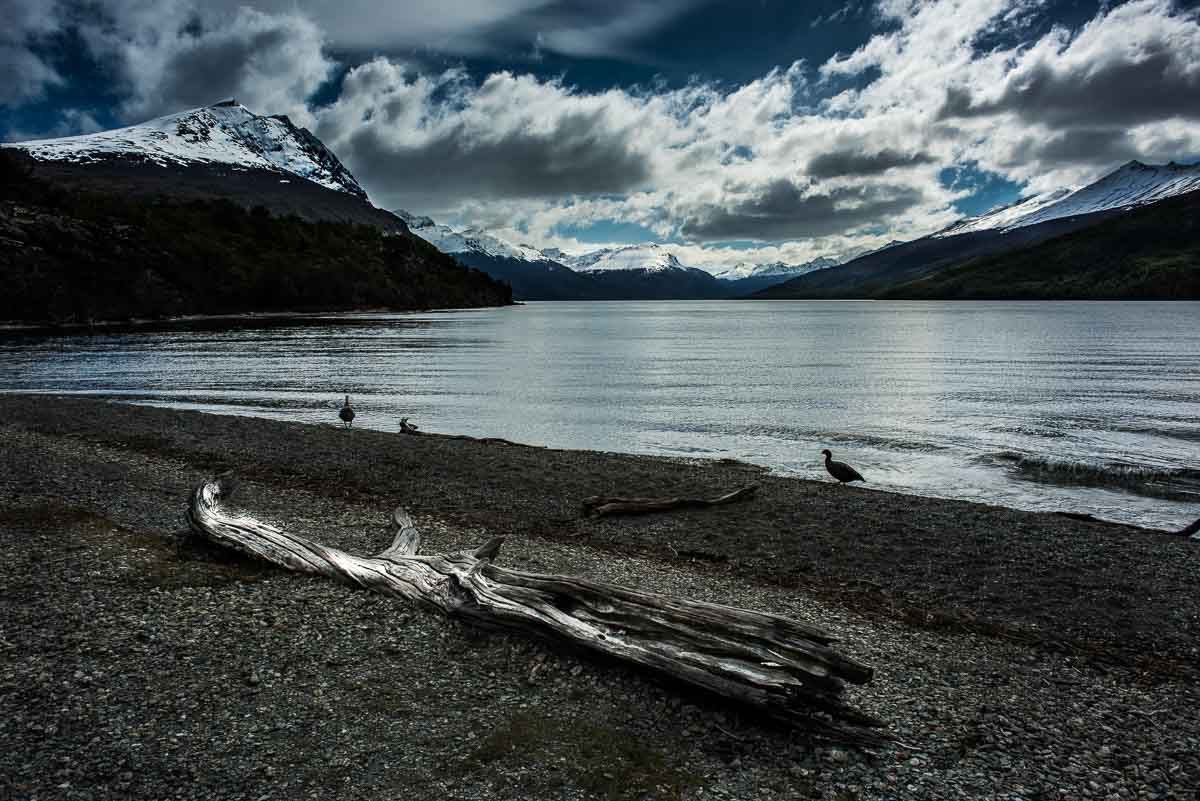
47 In October we started a month in Argentina with a short stay in Buenos Aires and then a flight to Ushuaia, the southern most city in the world. From our base there we spent four days hiking all over the tamer parts of Tierra del Fuego. (The wild parts are far beyond the capabilities of all but the most intrepid.) Although we stuck to paths, we did see a large part of this incredible landscape and got a sense of what attracts people here, starting with people like Magellan and Darwin, whose accomplishments shook the world.
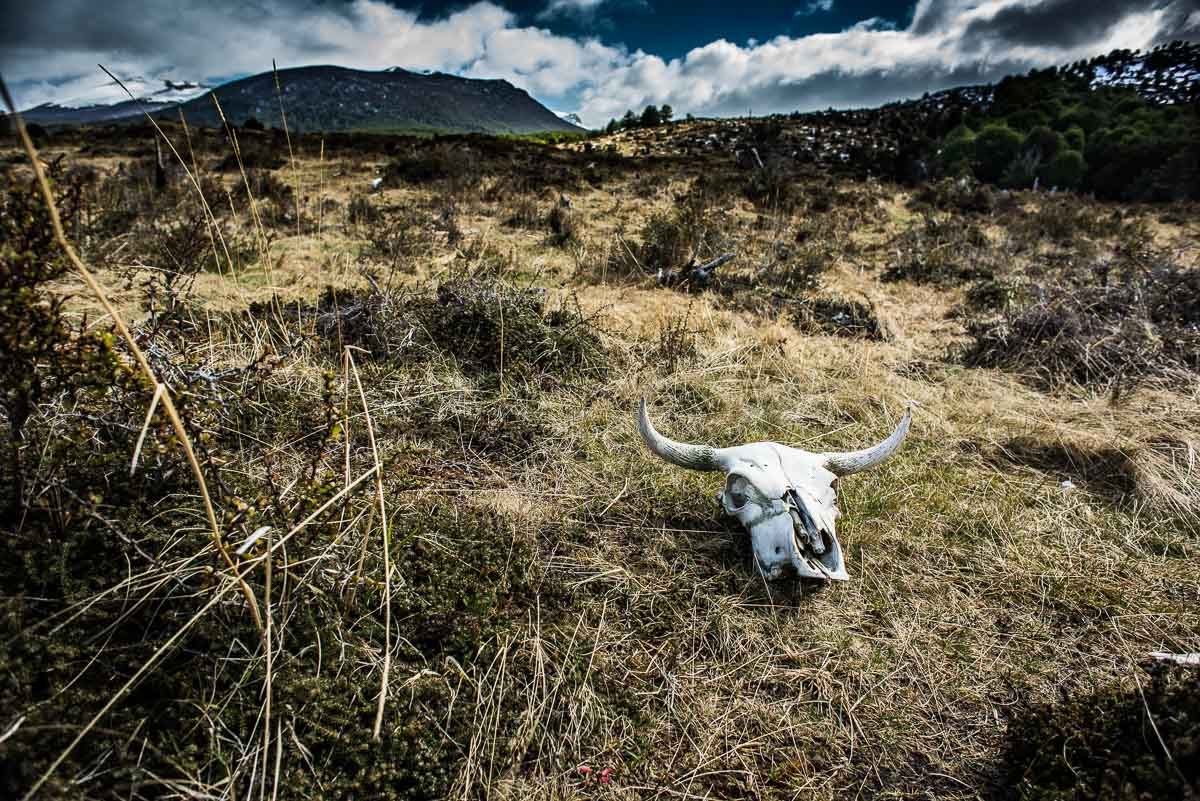
48 As part of our visit to Ushuaia, we visited the extensive Harberton Farm, the oldest farm on Tierra del Fuego. The farm is still in operation, although operations are not at the original levels. The sheep are all gone, but a few cattle still roam the marshy pastures. Some of them don't make it to the slaughterhouse.
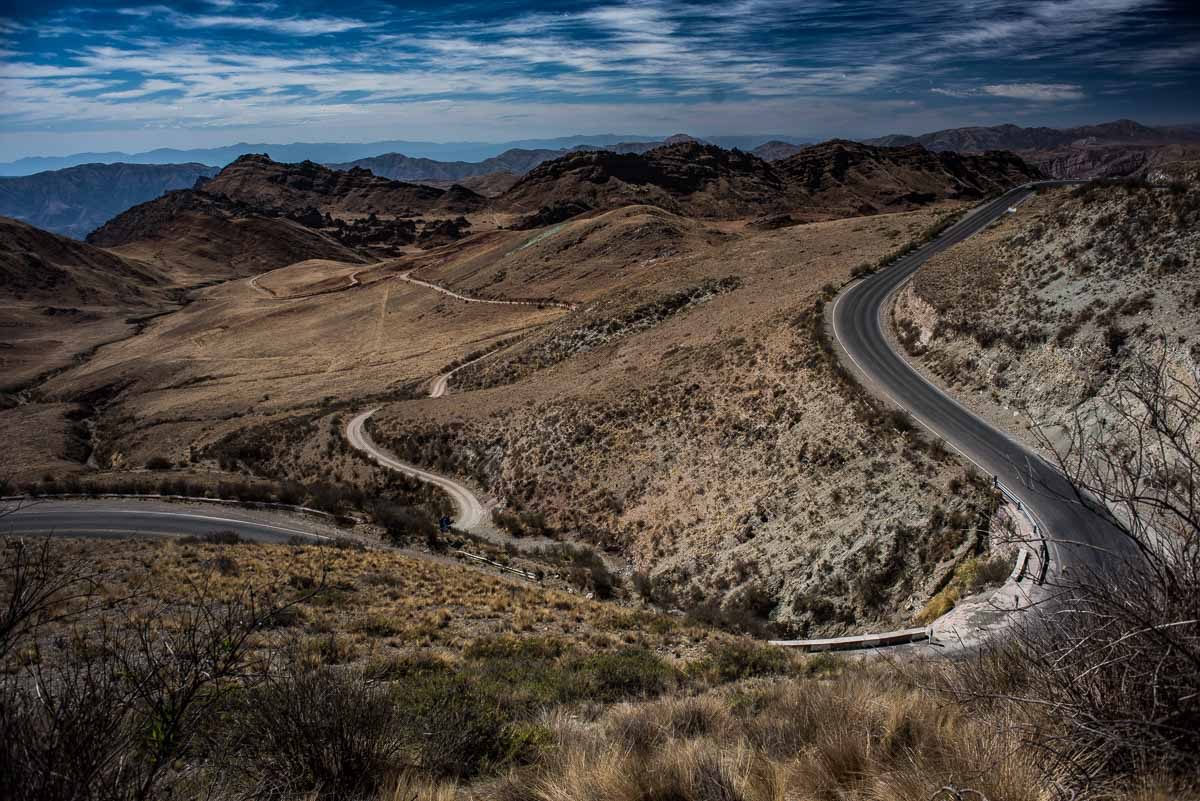
49 At the opposite end of Argentina from Ushuaia is the high desert in the northwest part of the country. The main city there is Salta, and from there you can take a bus through the mountain passes, over 4000 meters (13,000 feet) to Cachi. On the way there, you pass the Cuesta del Obispo, the Hill of the Bishop. According to the story, centuries ago the Catholic bishop trekked these paths to visit his flocks. He didn't have the paved roads, of course.
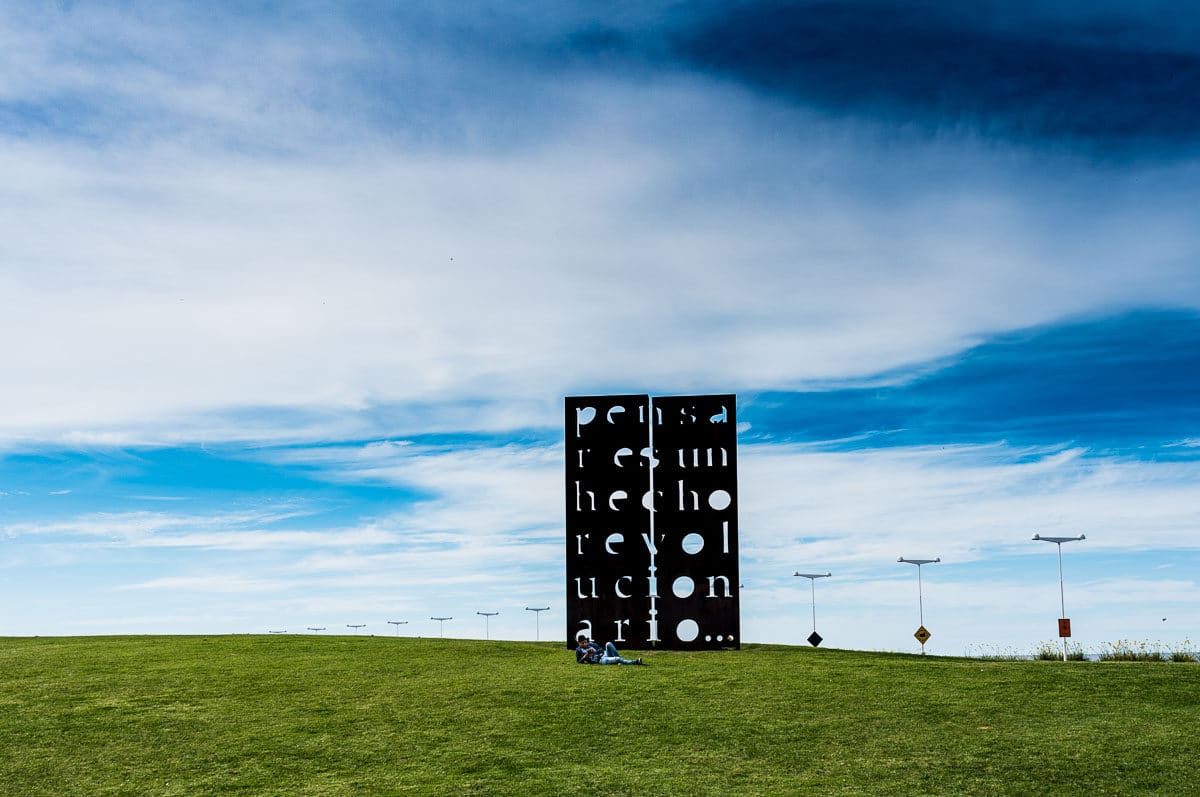
50 Perhaps the saddest spot of the year for us was the Parque de Memoria, Remembrance Park, in Buenos Aires, near the banks of the Rio de la Plata. There is a large sculpture park which includes several low walls on which the names of the “Disappeared” are inscribed. More than 20,000 Argentines were murdered by their government in the 1970s. Many of them were flown out over the wide Rio de la Plata and dumped in the sea. Hence the word “disappeared.” This is a memorial to them. This sculpture says, “Thinking is a revolutionary act.”
I also had a photo exhibition in Minneapolis in 2017.
We've done a year-end photo post since we started Travel Past 50 in 2013. Here are links to all the annual photo posts: 2013, 2014, 2015, 2016, 2017, 2018, and 2019.
Up Your Travel Skills
Looking to book your next trip? Use these resources that are tried and tested by us. First, to get our best travel tips, sign up for our email newsletter. Then, be sure to start your reading with our Resources Page where we highlight all the great travel companies and products that we trust. Travel Accessories: Check out our list of all the accessories we carry to make getting there and being there a lot easier. Credit Cards: See our detailed post on how to choose the right travel rewards credit card for you. Flights: Start finding the very best flight deals by subscribing to Thrifty Traveler. Book your Hotel: Find the best prices on hotels with Booking.com. See all of the gear and books we like in one place on our Amazon shop.Got a comment on this post? Join the conversation on Facebook, Instagram, or Threads and share your thoughts!



Comments are closed.